51 Voices

The MERL is 70 | 51 Voices | 51 Objects
To mark our 70th year in 2021, we explored objects connected to 1951, the year the museum was established.
We worked with artists and writers from many different communities and backgrounds to link these items to the priorities and passions of the past, present, and future. Throughout 2021, an array of Voices were mapped to 51 objects, enabling reflection on mid-century ideas. By working with different people and communities, collections were re-imagined with surprising and perhaps challenging responses.
Below, find out more about 51 Voices by clicking the top three images, or explore the new objects and Voices that we revealed week by week and month by month throughout the year.

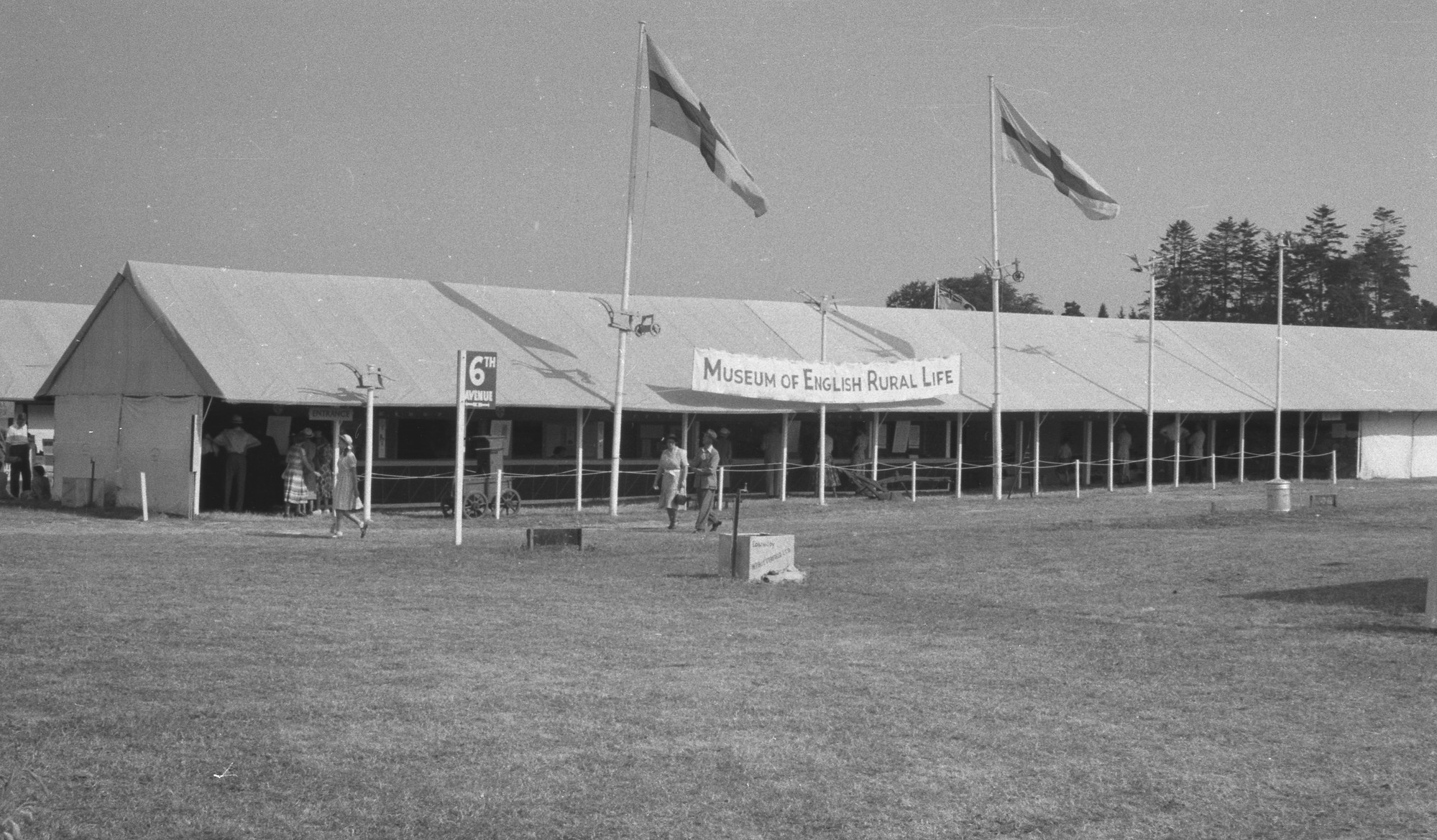
The MERL is 70!
Our Museum was founded by the University of Reading in 1951, to help capture changes to the English countryside. They worked closely with rural people to safeguard history through collections. Over seven decades The MERL grew into a leading site for understanding food, farming, craft, and countryside. Over the years it has played a vital role in delivering exciting public activities, teaching, and research. Today’s team works alongside rural and urban communities, engaging them in country life, past and present.
This image features model ploughs from the 1951 Festival of Britain reused on The MERL’s 1952 trade stand. The same banner is now displayed in our Collecting Rural England gallery.
Photograph (MERL 35/1566); Banner (MERL 2014/20)
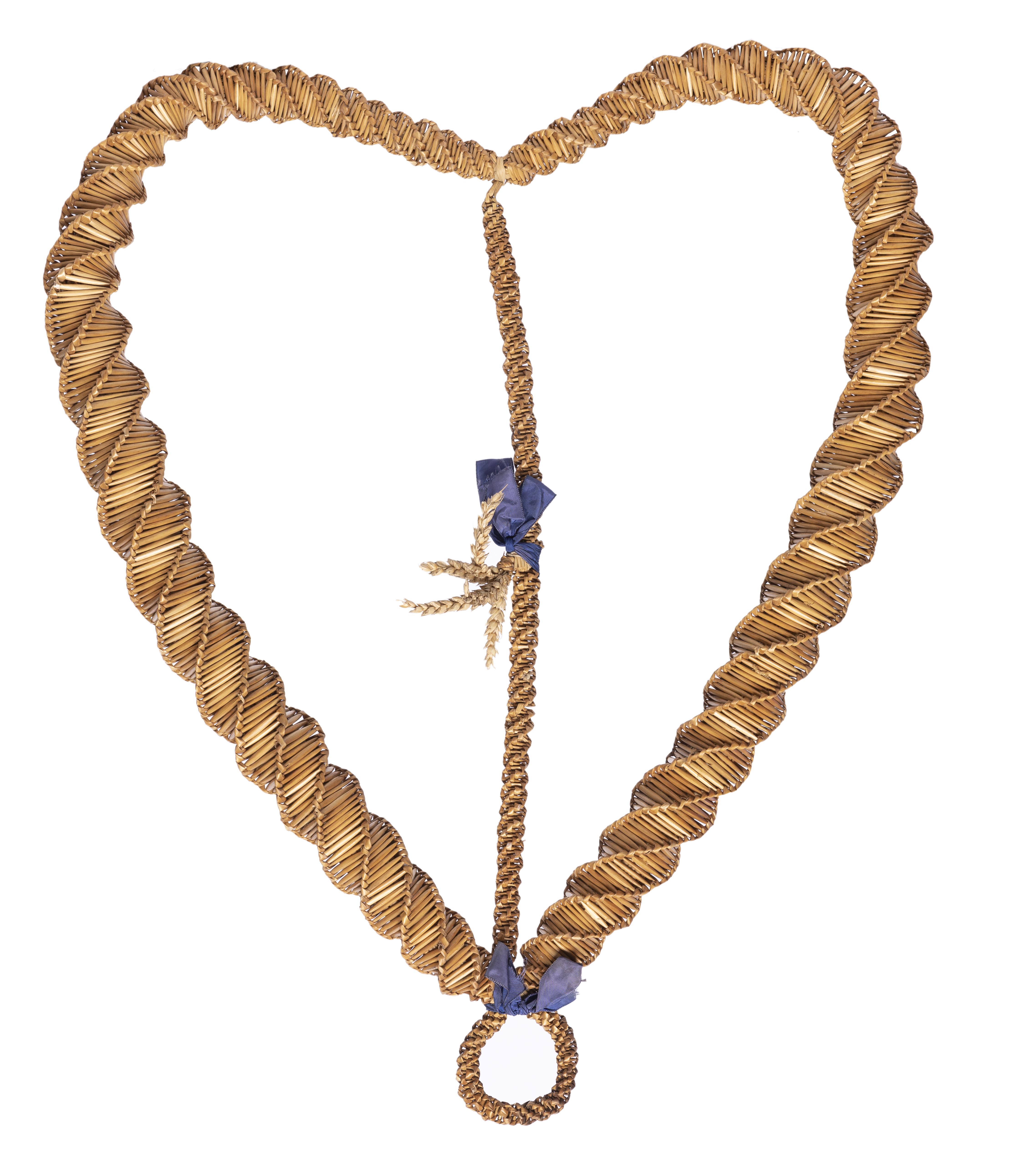
51 Voices
Over the coming year, we will welcome diverse contributors to explore, re-imagine, and respond to one of 51 objects. This might involve writing, performance, film, growing, making, and more. These Voices will respond to vital issues such as landscape, food, tradition, health, climate, access, and our post-colonial world. Stories will be unlocked and communities will help re-interpret our holdings. New Voices will play a pivotal role in shaping the Museum, as we turn 70, and beyond.
This image shows a straw heart made by Fred Mizen for the Festival of Britain (MERL 52/79) Our project will connect the skill of mid-century makers like him to creativity today.
Straw craft heart (MERL 52/79)
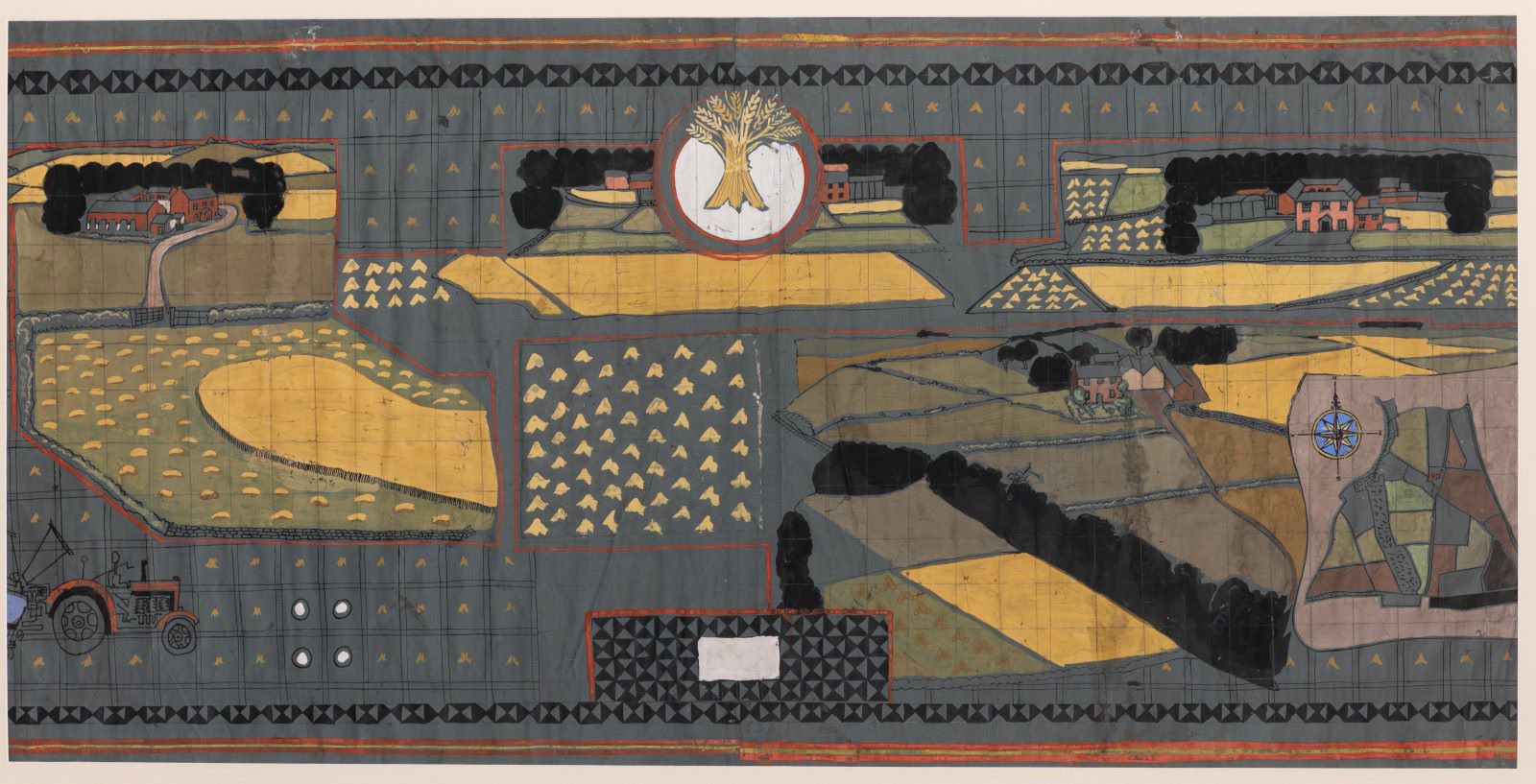
51 Objects
We’ve chosen outstanding 1951-related objects. Participants will explore them to reveal fascinating stories and link them to today’s passions and priorities. They include original items from that iconic moment of renewal, the Festival of Britain. 70 years on we hope to reactivate these materials as part of fresh conversations about reconstruction and regeneration. Voices responding to these objects will be presented in a blend of online and actual activity.
This image shows a design by Michael O’Connell for one of a series of wall-hangings for the Festival of Britain (MERL 2009/64/5; MERL 63/18/7). Later in 2021 we’ll be revealing how his finished artworks travelled further afield, bringing rural England to a very unexpected place indeed!
Wall-hanging design (MERL 2009/64/5)
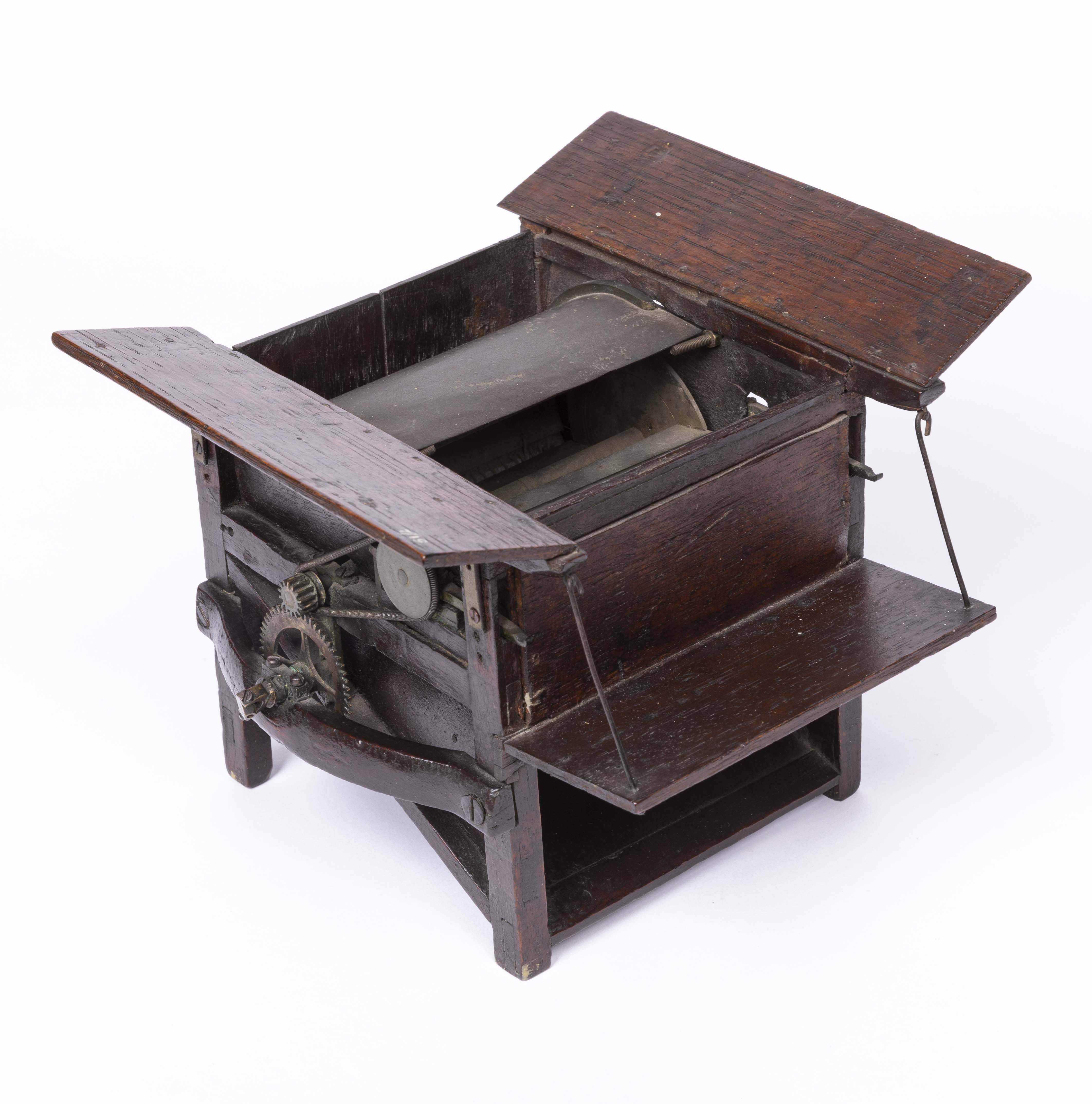
1. Model Thresher
Barrett, Exall & Andrewes, Model threshing machine, 1847
This model was the second object to be listed as part of The MERL collection in 1951. It was made by Reading-based company Barrett, Exall & Andrewes in 1847, to demonstrate a horse-powered threshing machine. In 1851, exactly a century before it reached The MERL, the company exhibited this technology at the Great Exhibition. Its rich history reveals stories of display, education, unrest, and colonialism.
Click here for a detailed exploration of this model thresher by Curator of MERL Collections, Dr Ollie Douglas.
Click here to see this object in an online exhibition about Rural Protest, developed by Tim Jerrome.
Click here to read two poems about this object by students from The Langley Academy, click here to read a poem about this object by the writer Nicola Chester, or click below to hear her recite.
Read about a Swing Riots ballad composed by volunteer Jeremy Jones, or click below to hear him sing.
Model thresher (MERL 51/2)
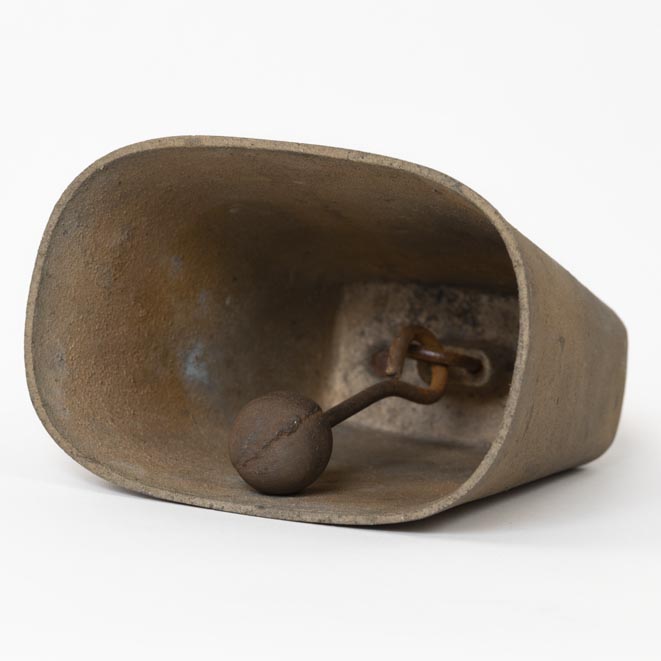
2. Sheep bell
Whitechapel Bell Foundry, Sheep bell used as theatre prop, 1950s
This bell was made in the early 1950s at the Whitechapel Bell Foundry. The story of this foundry highlights the precarious state of heritage crafts. Designed for a sheep, this bell found a different purpose, as a prop in a pioneering London theatre. Its story reveals how rural things link to urban makers, and how the countryside plays a role in the arts.
Click here to read three poems about this object by students from The Langley Academy.
Hear the sound of this bell from 1:20 in this film by artist Felicity Ford.
Sheep bell (MERL 54/92)
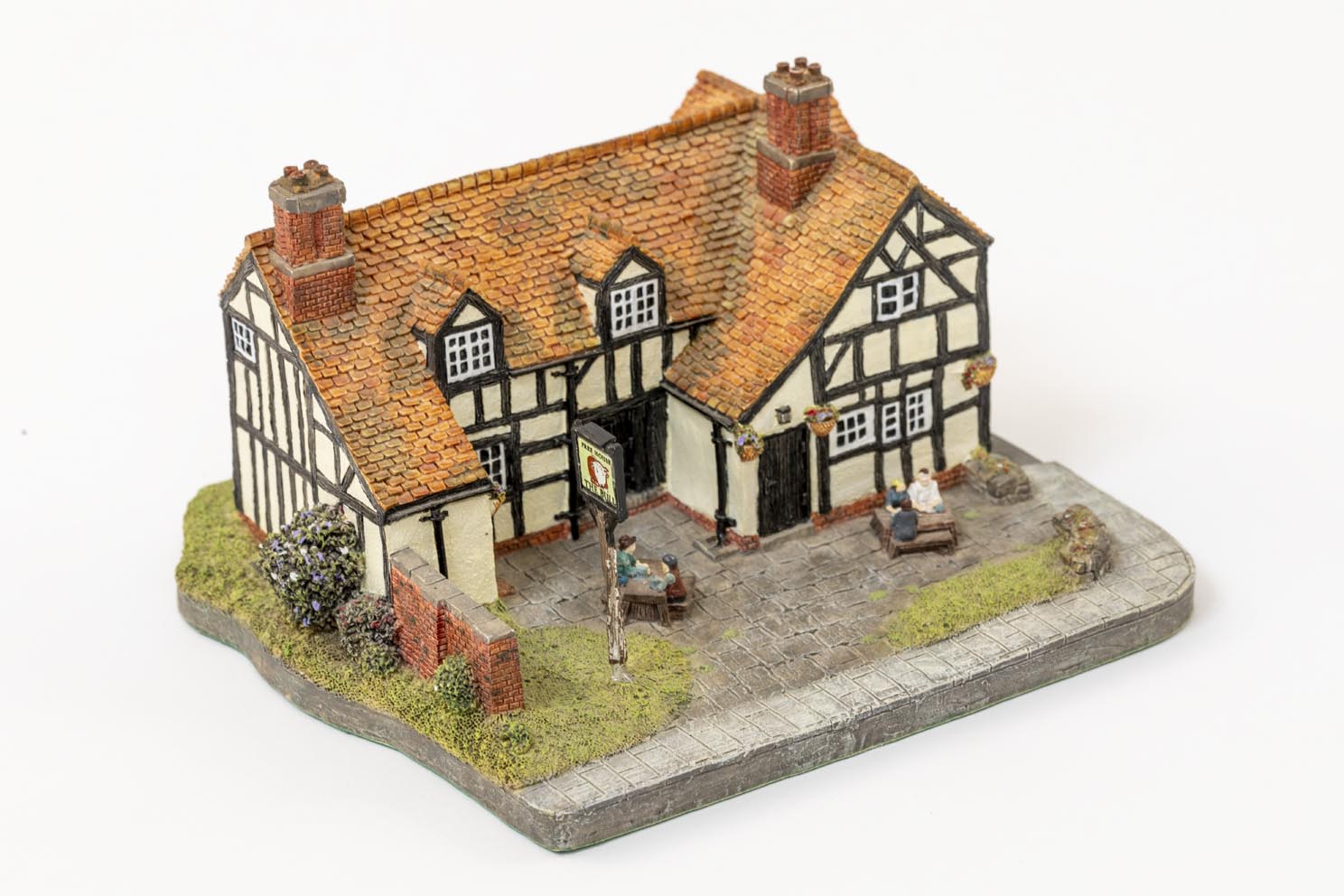
3. Model pub
Danbury Mint, Model pub from The Archers radio serial
The Archers was first broadcast nationally on the day that The MERL was founded. It tells the story of life in the fictional village of Ambridge. This model of the fictional pub The Bull was based on a real pub that the creator of The Archers liked. The Archers approach to broadcasting has been copied in many different parts of the world.
Model pub (2019/85)
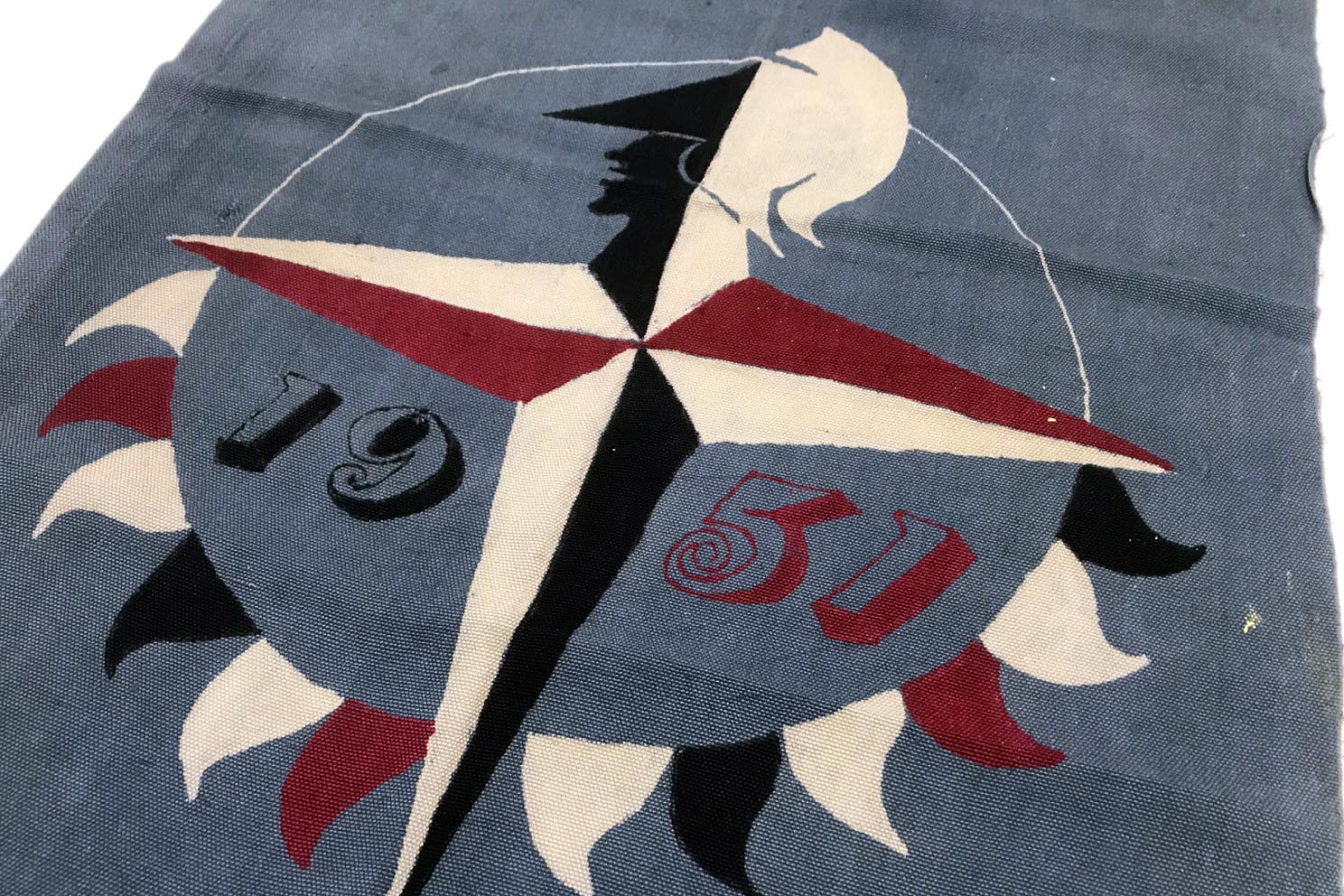
4. Festival Logo
Michael O’Connell, Festival of Britain logo wall-hanging, circa 1951
In 1948, Abram Games won a competition to create a logo for the Festival of Britain. His iconic design is reproduced here by another Festival creative contributor, artist Michael O’Connell. It is unclear if this was for practice or if it was intended as a display piece. The logo has recently been reimagined again by Richard Littler in a satirical ‘Festival of Brexit Britain’ poster.
Festival Logo (96/117)
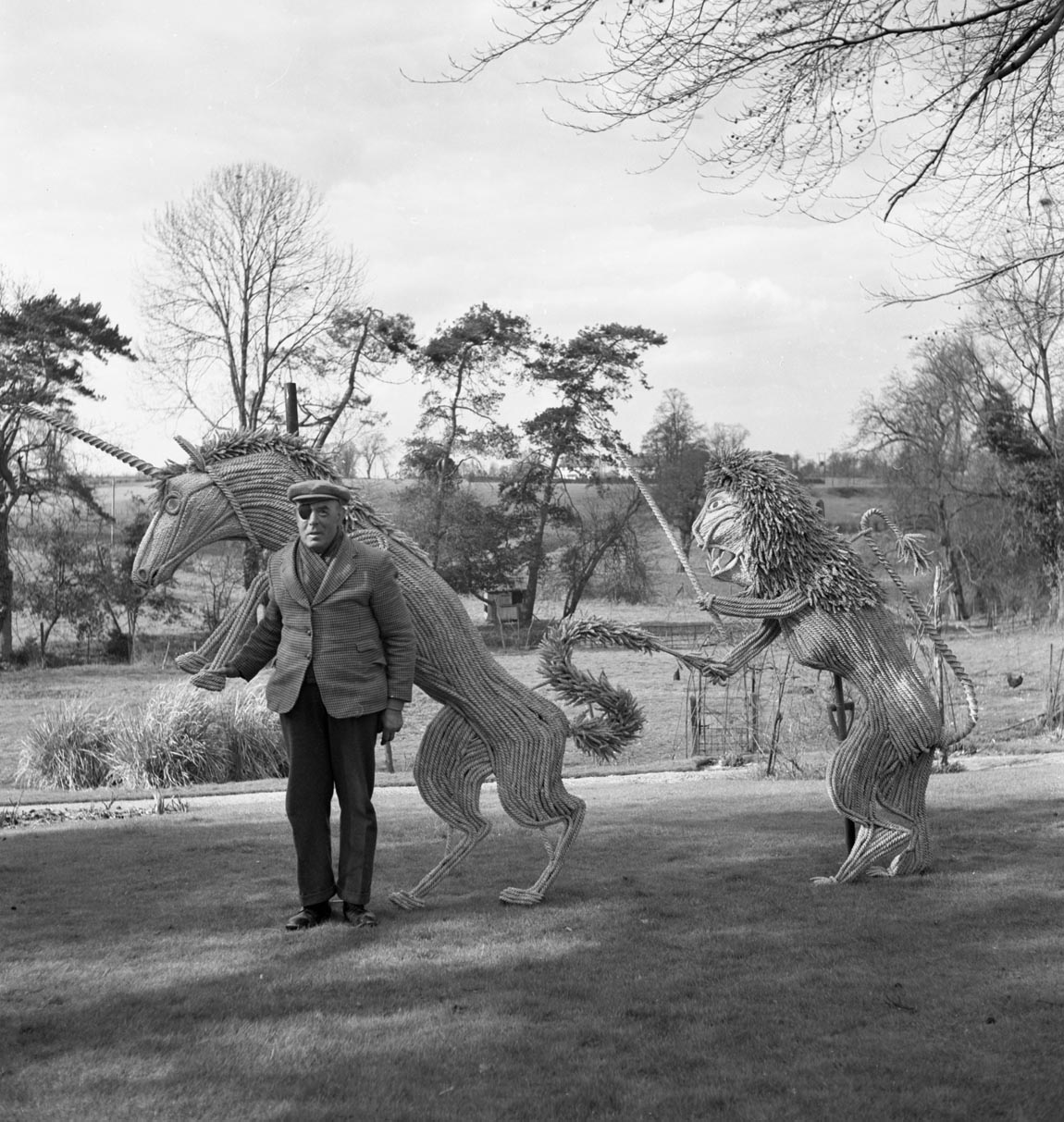
5. Lion and Unicorn
John Tarlton, Fred Mizen with Lion and Unicorn sculptures, 1951
These photographs by Essex photographer John Tarlton show craftsman Fred Mizen beside the largest pieces of straw sculpture that he made for the Festival of Britain. His work was a blend of different traditions. These pieces symbolised the Union and hinted at ‘national character’. Mizen lived in Great Bardfield, Essex, which was home to many artists in the 1950s.
Click here to read a poem by Obby Robinson, as written in response to Fred Mizen’s strawcraft.
Curator of MERL Collections, Dr Ollie Douglas, explores corn dolly revivals and Mizen’s Festival of Britain straw craft, as published in issue 101 of Selvedge magazine and shared with their kind permission.
Lion and Unicorn photographs (P TAR PH1/3/3/7/1-2)
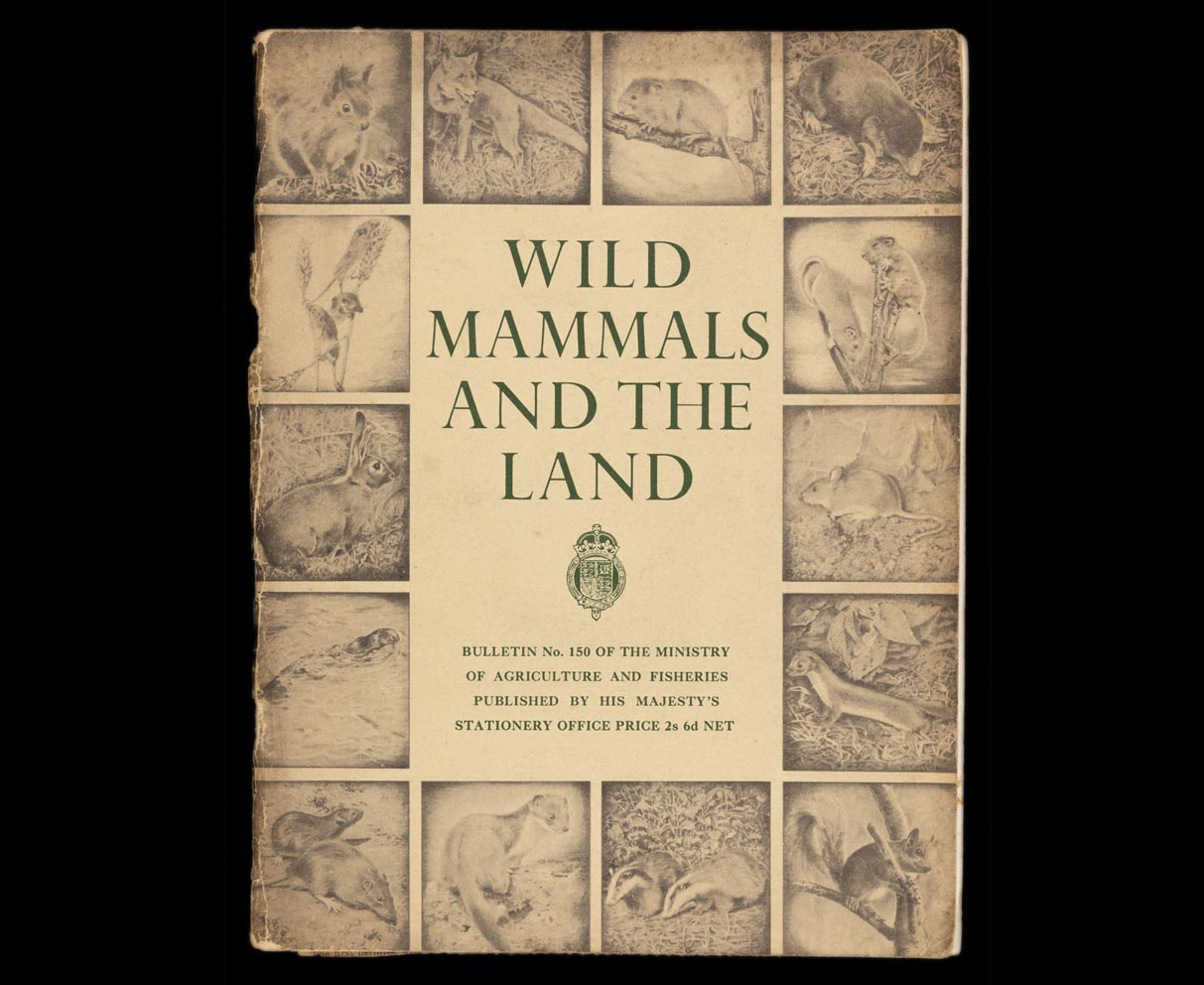
6. Wild Mammals Bulletin
F. H. Lancum, Wild Mammals and the Land (London: HMSO, 1951)
This booklet was one of a series created to advise farmers on land, livestock, and nature. Some of the latest farming techniques were harmful to the environment. Nevertheless, the idea of ‘land’ was important and farmers were starting to be seen as custodians of the countryside.
Click here for a detailed exploration of this bulletin by MERL Fellow, Professor Karen Sayer.
Click here for a timeline of twentieth century farming based on research by Karen and others.
MERL Library

7. The Hermitage
Thomas Hennell, Drawing of the Hermitage, 1939
This drawing shows a hut belonging to the writer H. J. Massingham called ‘The Hermitage’. He acquired the artefacts in this hut while researching his 1939 book Country Relics. He donated them to The MERL in 1951. The book was illustrated by Thomas Hennell, creator of this drawing, with images of tools, people, and places. Hennell was a countryman at heart. he later worked as a war artist during the Second World War and sadly died in service in Java in 1945.
Drawing by Thomas Hennell (MERL 85/59)
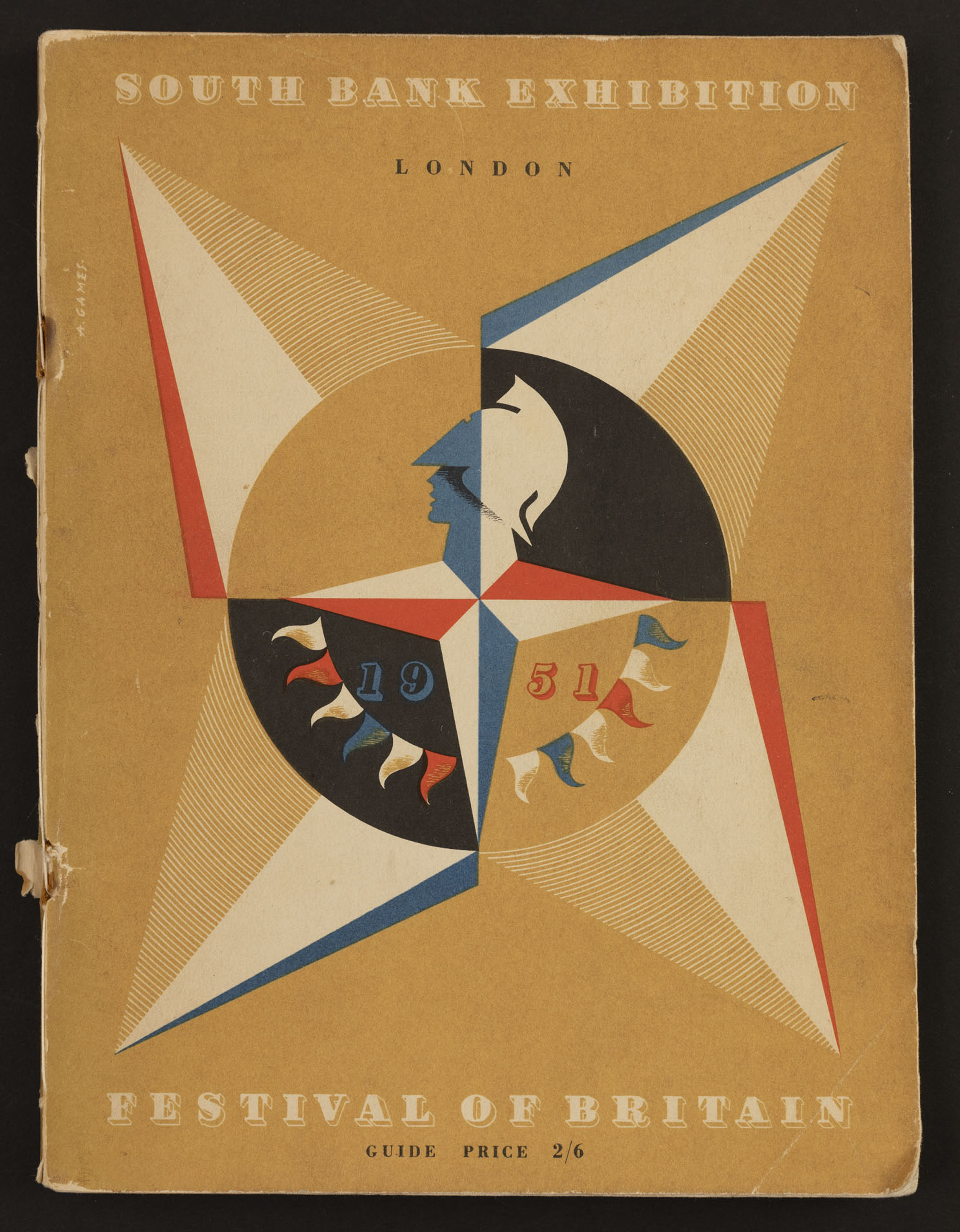
8. Festival Guide
Ian Cox, The South Bank Exhibition: A Guide to the Story It Tells (London: HMSO, 1951)
For many visitors who flocked to the Festival of Britain, this souvenir guide provided a lasting reminder of the key highlights of this national celebration. Adorned with the striking Festival logo, the pages inside revealed routes through the site’s ‘continuous story’ and summaries of each themed area. From tinned peas to major infrastructure, the advertisements within offered a snapshot of social, cultural, domestic, and industrial life in mid-century Britain.
MERL Library 1770-COX
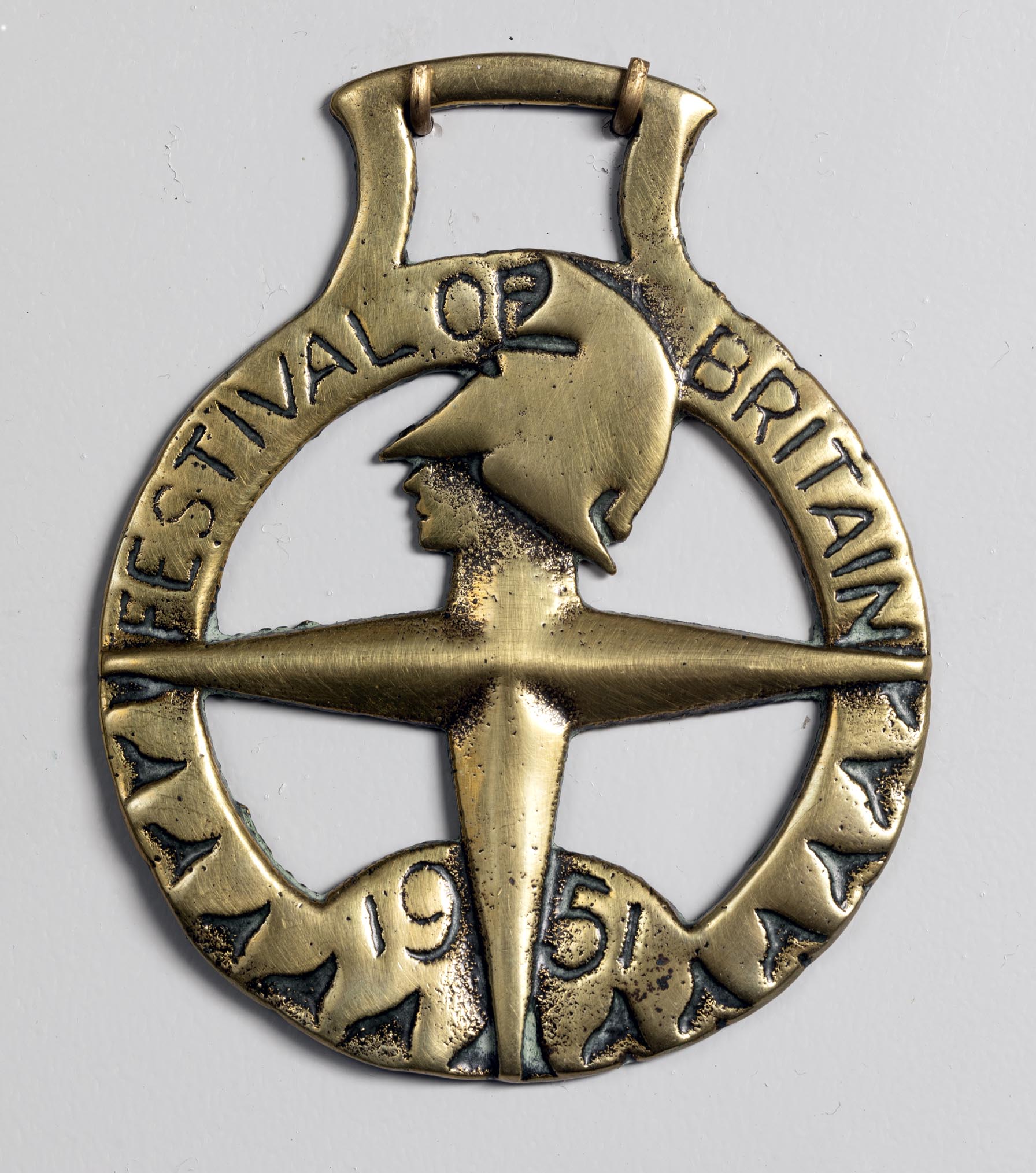
9. Horse Brass
Armac Brassworks, Festival of Britain horse brass, 1951
Brasses like this were originally made to adorn heavy horse harness. This example is one of many souvenirs sold to commemorate the Festival of Britain. It reminded visitors of the interwar dependence on animal power and helped to reveal the progress shown by tractors on display. Horse brasses are now highly collectible and are synonymous with rural nostalgia. They feature in pubs and countryside collections alike. This brass was acquired from the dispersal of a private collection in 2011 but the Museum also acquired many during its foundational year.
MERL 2011/8/3
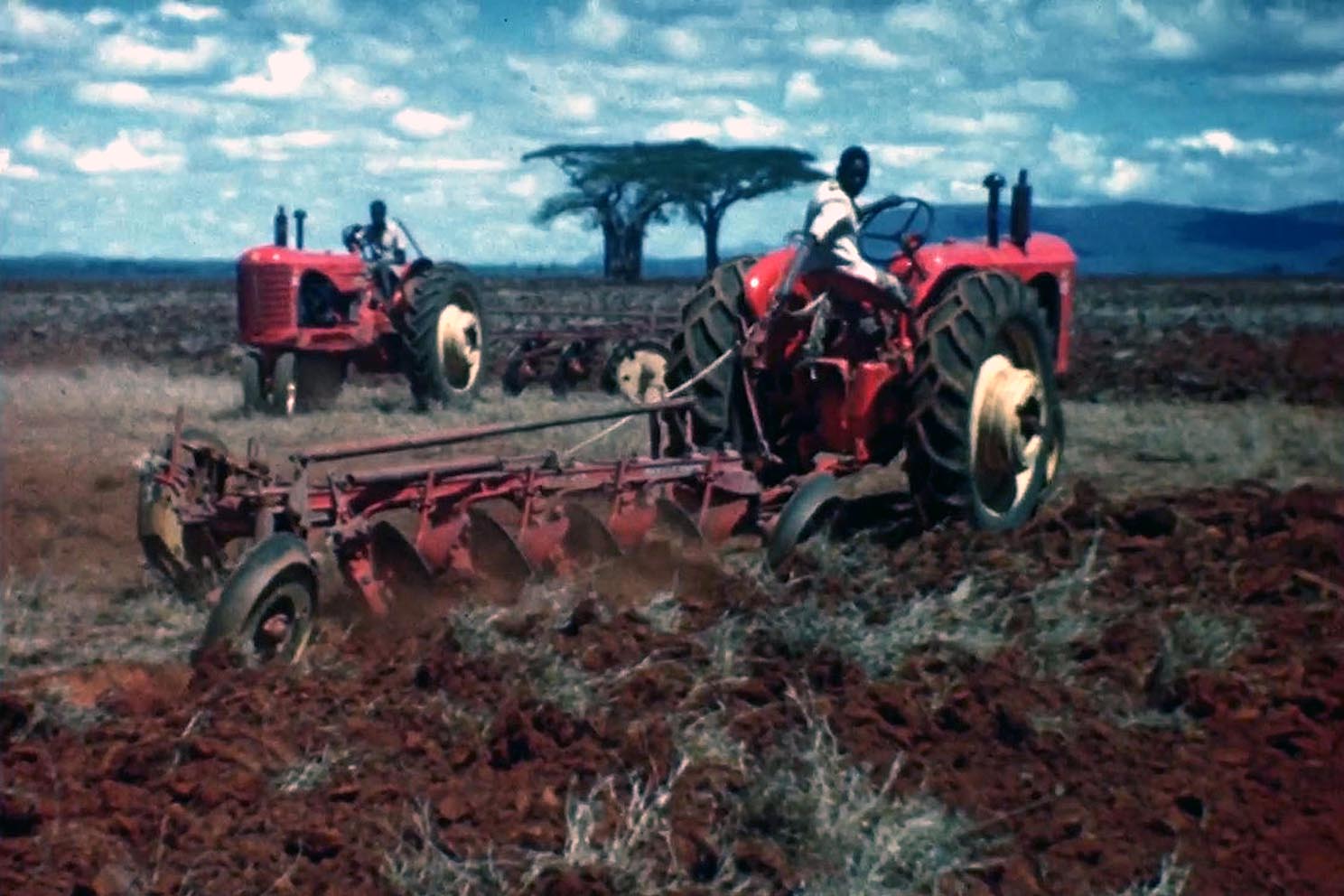
10. Groundnut Film
Colour film, The Groundnut Scheme at Kongwa, Tanganyika, 1948
The Groundnut Scheme was a disastrous attempt by the British Government to cultivate large tracts of land in East Africa. It aimed to solve cooking oil shortages in Britain and reduce rural depopulation in Tanganyika (present-day Tanzania). The project failed to account for local knowledge, land, or climate. This film captures activity underway, before the Scheme was abandoned in January 1951. This was the same month that The MERL was established.
You can watch the film, using the University of Reading Virtual Reading Room.
Click here to read reflections on the Scheme from PhD researcher Atenchong Talleh Nkobou.
View an online exhibition about the Scheme, developed with the help of History students from the University of Reading.
MERL TR 17RAN PH6/49

11. The Country Year
Barry Evans and William Kempster, Designs for The Country Year, 1951
The MERL holds five preparatory designs for an exhibit called The Country Year, which featured in the Country Pavilion at the Festival of Britain. The exhibit had 12 panels showing the countryside month by month. These surviving sketches show lambing, haymaking, harvesting, potato-lifting, and ploughing. After the Festival ended the full-size artworks were given to The MERL. They appeared in its trade stand at the Royal Show in 1952. Sadly these originals were lost in the 1950s.
Click here for an amazing creative response from artist Lisa-Marie Gibbs and Downshire House.
MERL 2019/3-7
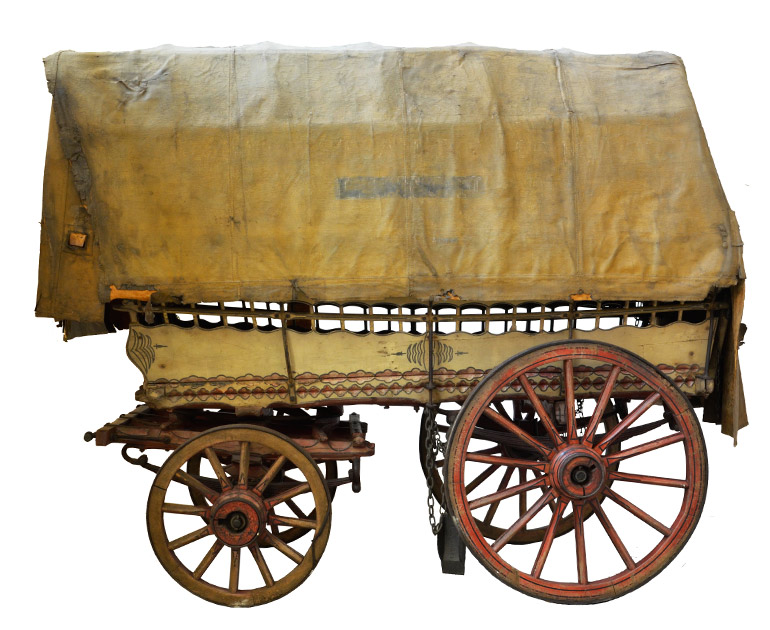
12. Miller's Wagon
Meadcroft of Welwyn et. al., Miller’s wagon, circa 1880
This wagon belonged to a miller and was used to transport grain and flour. It was made by Meadcroft, using an axle by Stenning, and with a cover by Peddar of Luton. When other means of transport took over, vehicles like this came under threat of disposal. In its early years The MERL played a major role in saving wagons from destruction. Unlike many others, this example had been carefully stored when it was first removed from use. In 1951 it was purchased by the Museum for £5.
MERL 51/1295

13. A Land
Jacquetta Hawkes, A Land (London: Cresset Press, 1951)
Archaeologist Jacquetta Hawkes convened the People of Britain pavilion at the Festival of Britain. Published in the same year, this book told a similar story of land, migration, and of successive incomers shaping British ways of life. However, the real story was also one of influences that were not yet acknowledged. The idea that successive migrations from Europe were the lifeblood of the modern nation did not match the changing cultures of a post-war and post-Windrush Britain.
Click here for a detailed exploration of Hawkes’ book and Festival work by Dr Amara Thornton.
MERL Library 1840-HAW
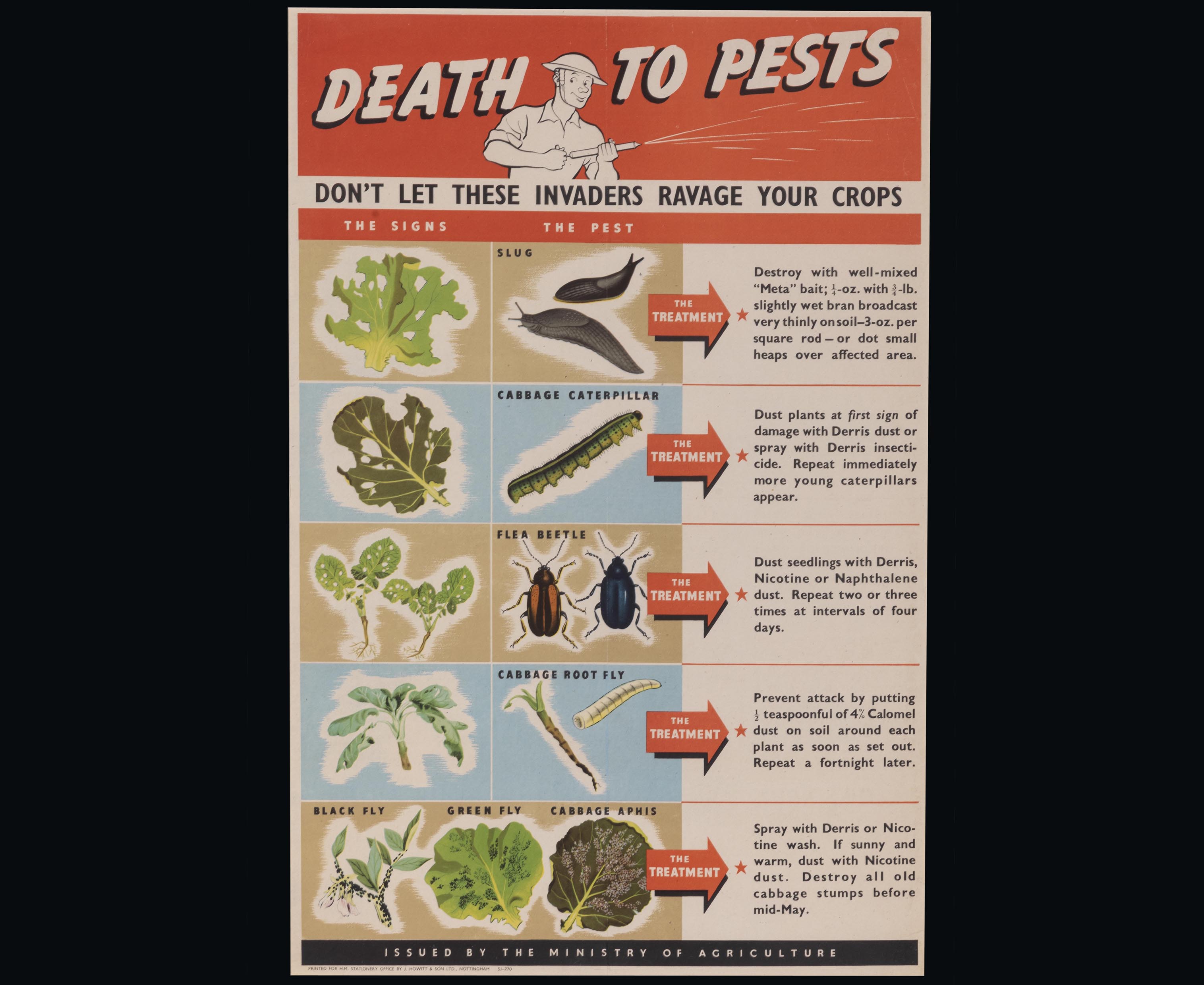
14. Death to Pests
Ministry of Agriculture and Fisheries, Death to Pests poster, 1951
This poster encouraged growers to combat common vegetable pests. Crop protection was part of national food security in the postwar period. The poster was designed to evoke the Second World War. The figure at the top wore a steel helmet and the language echoed wartime propaganda. Farming at this time was on the cusp of using many more synthetic pest management methods. Such treatments would rapidly become common. Organic alternatives would take far longer to take hold.
MERL 2010/149
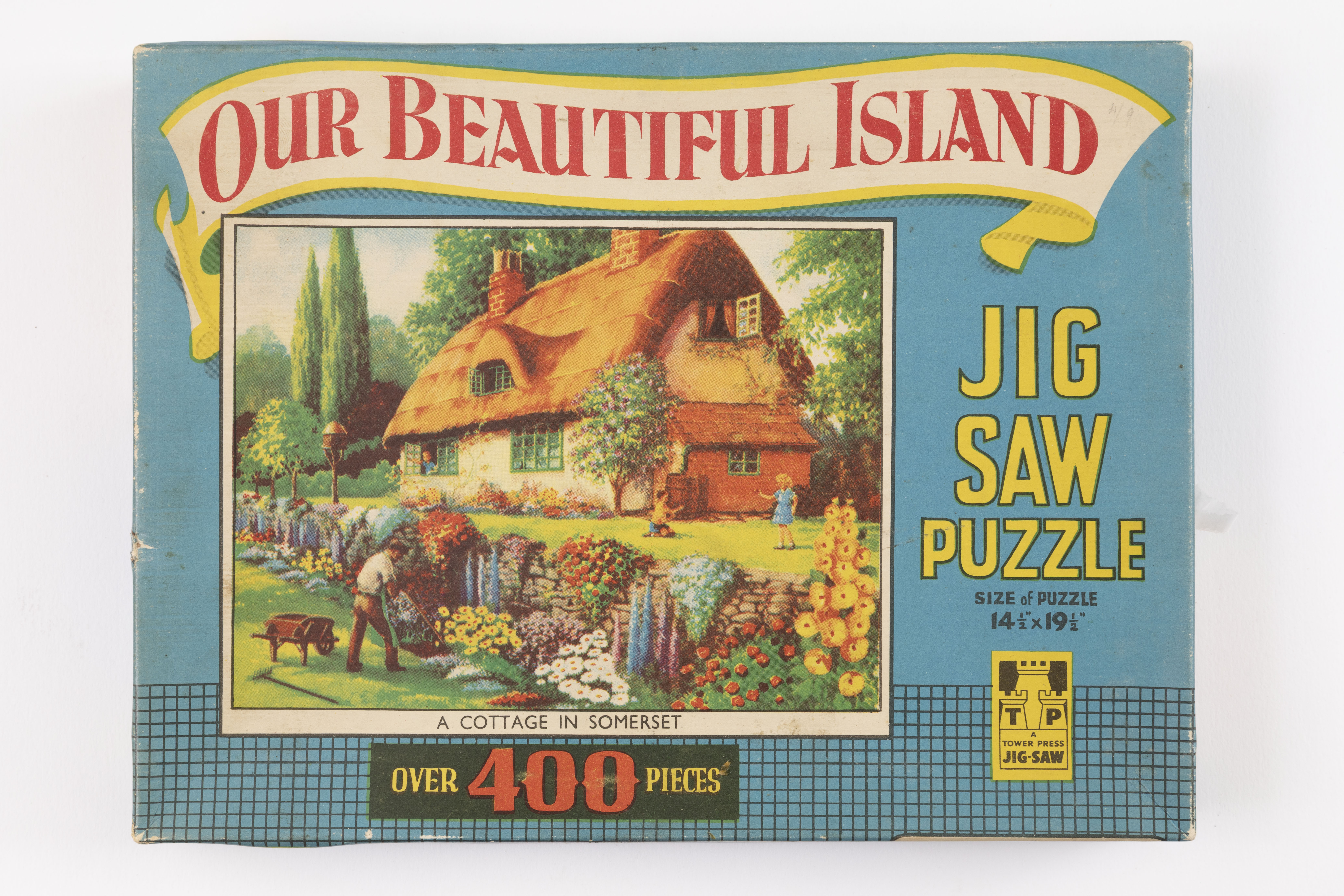
15. Our Beautiful Island
Tower Press, Our Beautiful Island jigsaw puzzle, circa 1951
This puzzle shows the countryside as a rural idyll, timeless and nostalgic. Similar images appear on many other jigsaw puzzles. It is likely that this ‘Cottage in Somerset’ was (and perhaps still is) a real building. The puzzle dates to 1951 or shortly thereafter. We know this because flyers inside the box refer to the ‘topicality’ of Tower Press puzzles and also to the ‘King and the pageantry of the Festival’. This is a reference to George VI and his patronage of the 1951 Festival of Britain.
Click here to read a poem by Tim Relf, written in response to this jigsaw puzzle.
MERL 2012/283/1-4
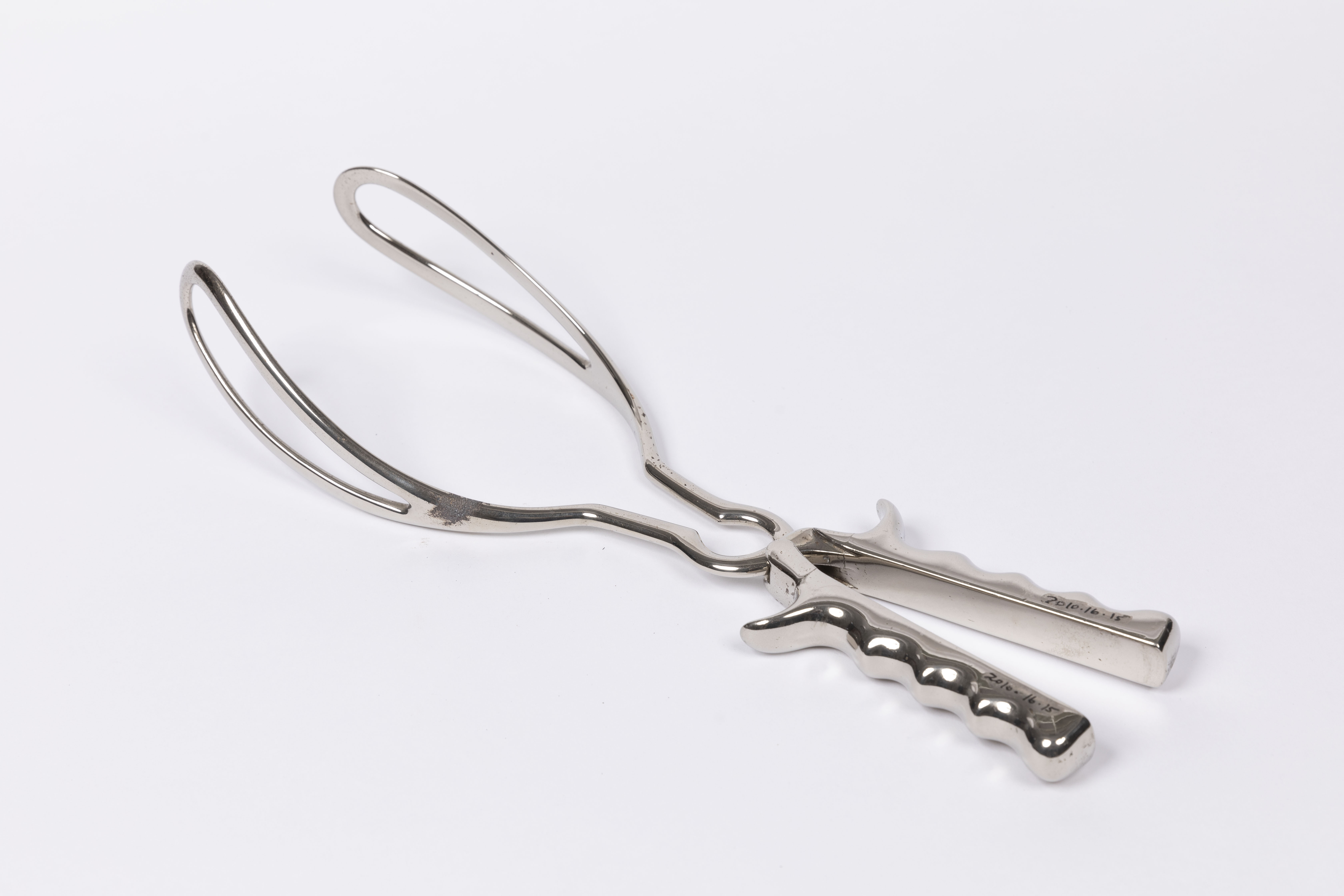
16. Obstetric Forceps
Stainless steel obstetric forceps, 1950s
These forceps are on loan to The MERL from the Berkshire Medical History Centre, which is based at the Royal Berkshire Hospital. They were used by a General Practice doctor in the mid-twentieth century when attending home births. Steel forceps were introduced in the interwar period and this set was in active use in the 1950s. The interlocking pieces join together to help guide the baby from the birth canal. This same period was also marked by a baby boom and by the early years of the National Health Service, which was formed in 1948.
Read a fascinating exploration of the forceps written by our fantastic volunteer Gillian.
Image © Berkshire Medical History Centre
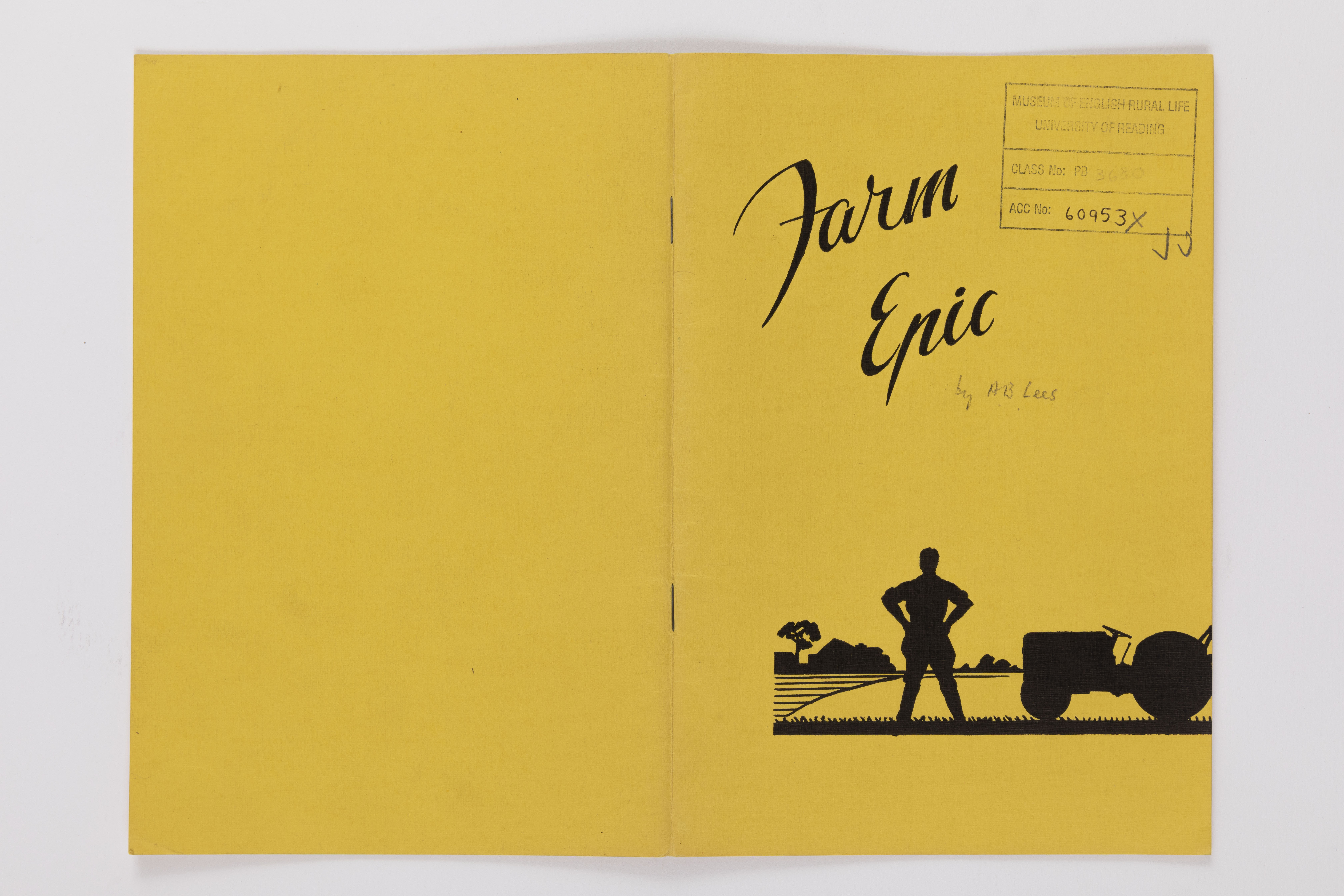
17. Farm Epic
Anthony Bernard Lees, Farm Epic (circa 1951)
This booklet describes the role of the ‘Ferguson System’ on a Cotswold farm, in a report that doubles as a tractor advertisement. In exploring mid-century technologies, author Anthony Bernard Lees revisits a wartime era of farm heroism hinted at by the silhouette on the cover. The same Ferguson machinery also featured prominently in the Festival of Britain and in early episodes of BBC radio serial The Archers. The ‘little grey Fergie’ tractor was a familiar farming touchstone.
Click here to read The Archers actor Tim Bentinck share his own epic Ferguson memories.
Watch this space for a creative response set to repurpose the Farm Epic text in amazing new ways…
MERL LIBRARY PAMPHLET 3680 BOX 1/11

18. Landscape Leader
Announcement, ‘The New President – Miss Brenda Colvin’, 1951
In 1951 Brenda Colvin became the first female president of the Institute of Landscape Architects. Their Journal announcement included a portrait, biography, and her presidential address. Colvin had established her practice in 1922. In the 1950s she began to take on infrastructural commissions such as power stations. She worked tirelessly into her 70s with the aim of providing future generations with spaces to both enjoy and to care for.
Click here to explore Brenda Colvin’s legacy in a piece by landscape architect Hal Moggridge.
MERL Library PER Open Access Jou/Ins-L
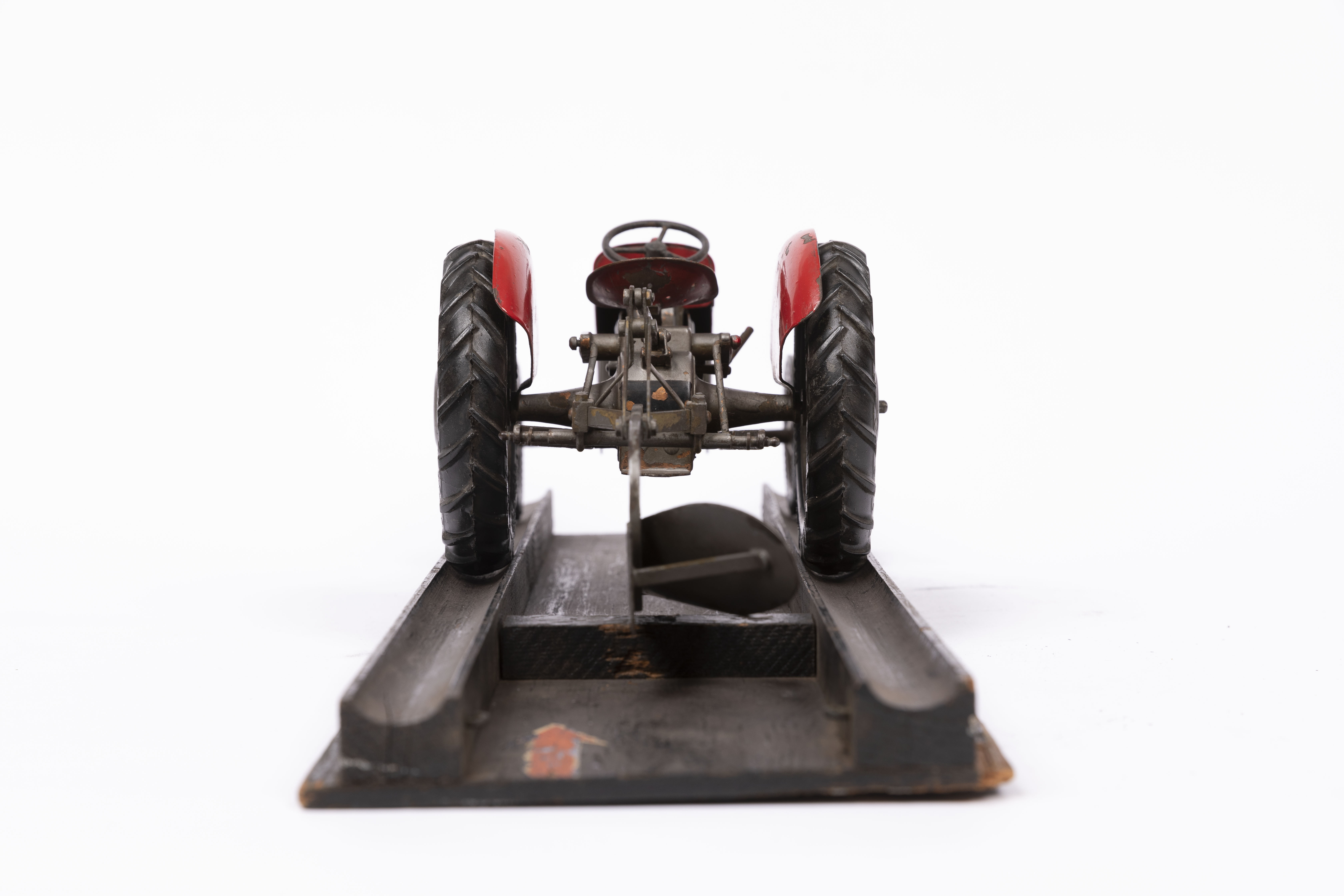
19. Clockwork Tractor
Ferguson, Demonstration model, circa 1949–1951
This model was designed to show the unique three-point linkage technology on a TE-20 tractor. A clockwork mechanism propelled the model forward. This example was overpainted red, probably to make it look like a later Massey Ferguson 35. The ‘Ferguson System’ featured in the Festival of Britain and was heavily promoted overseas. These models are known to have been used in India, Australia, South Africa, the USA, and elsewhere.
Read a more detailed history of the demonstration model by Stuart Gibbard.
Click here to read a poem by Ollie Douglas, written in response to the model tractor.
MERL 2014/16/1-8
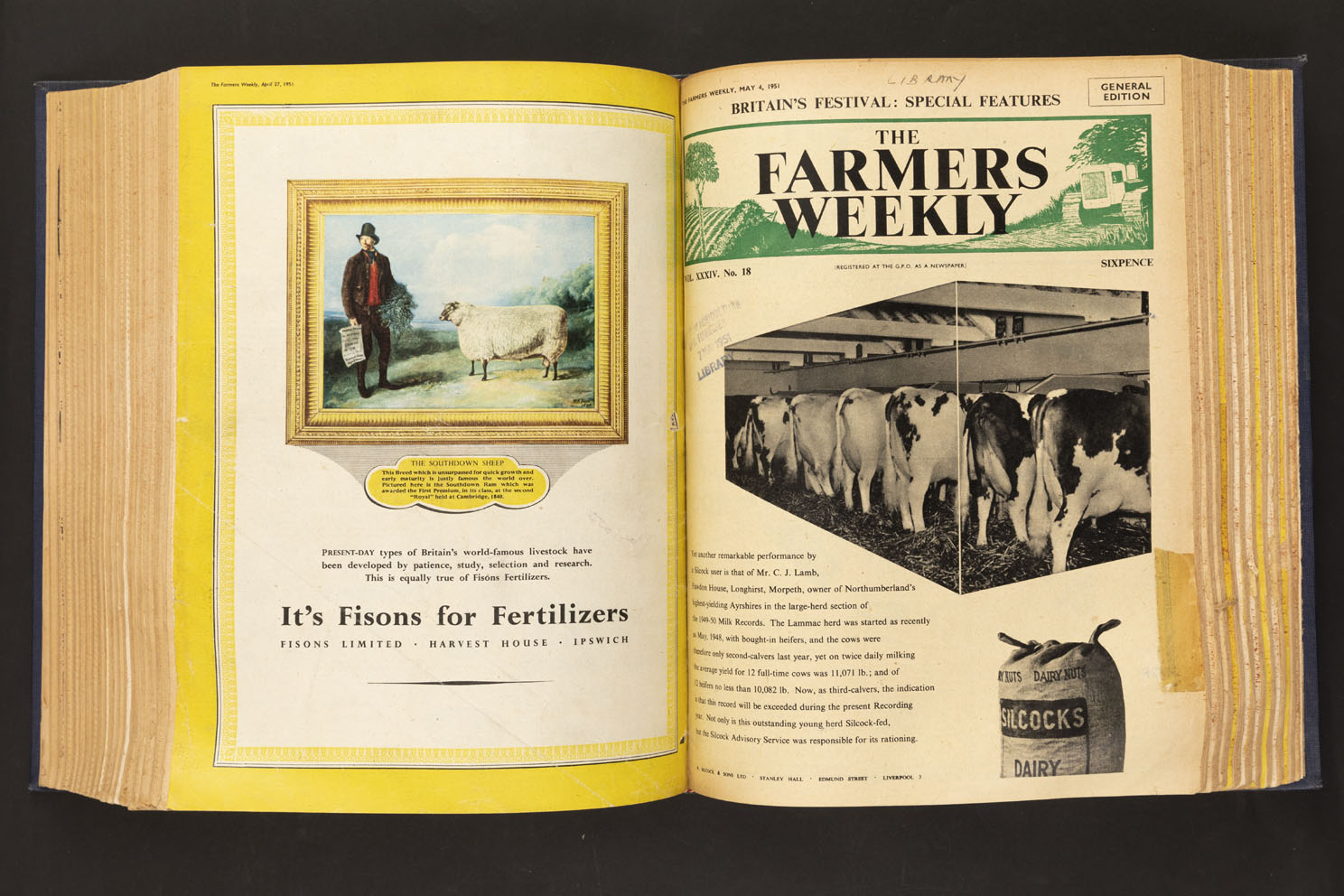
20. Farmers Weekly
The Farmers Weekly, ‘Britain’s Festival: Special’, 4 May 1951
The magazine Farmers Weekly was first published in 1934. It covered the latest developments in technology, policy, and practice. This 1951 issue featured the Festival of Britain. This came at a good time for a community facing post-war challenges. Critics had begun to suggest farmers were ‘feather-bedded’ and had it easy. As this special issue shows, the Festival helped portray farming as a modern industry and a force for good.
Read a detailed exploration of the issue by Professor John Martin.
Read the 1951 issue—copyright Farmers Weekly (large file)
Read a Farmers Weekly article by Tim Relf, all about 51 Voices—copyright Farmers Weekly
Explore HaikuMoo, an arts resource created by artist Adam Stead.
Explore Queer Lands, a creative response made by Oren Shoesmith and others.
Courtesy and copyright Farmers Weekly
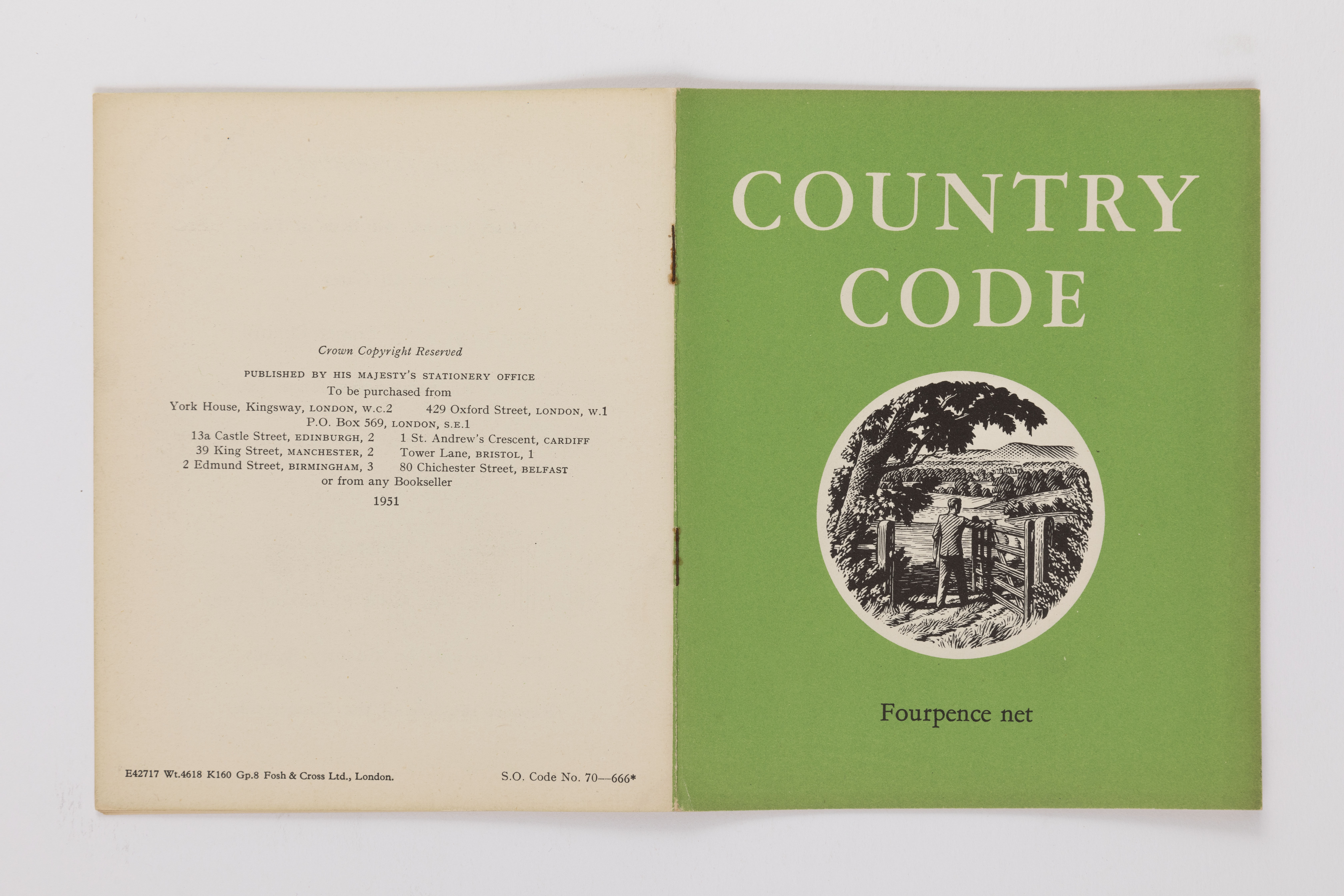
21. Country Code
National Parks Commission, The Country Code (London: HMSO, 1951)
The Country Code was published in 1951 in parallel with the establishment of the first National Parks. It was heralded by one member of the House of Lords at the time as ‘the best fourpennyworth of common sense he had ever read’. Its origins can be traced to earlier activity focused on countryside access, such as the Kinder Scout ‘mass trespass’ of 1932. The management of rural spaces has evolved during the twentieth century and the Code itself has been revised several times, including in 2021.
Click here to read a more detailed examination of this booklet by Professor Gavin Parker.
We hope to share the full booklet here in due course.
MERL SR OSS ET3/22
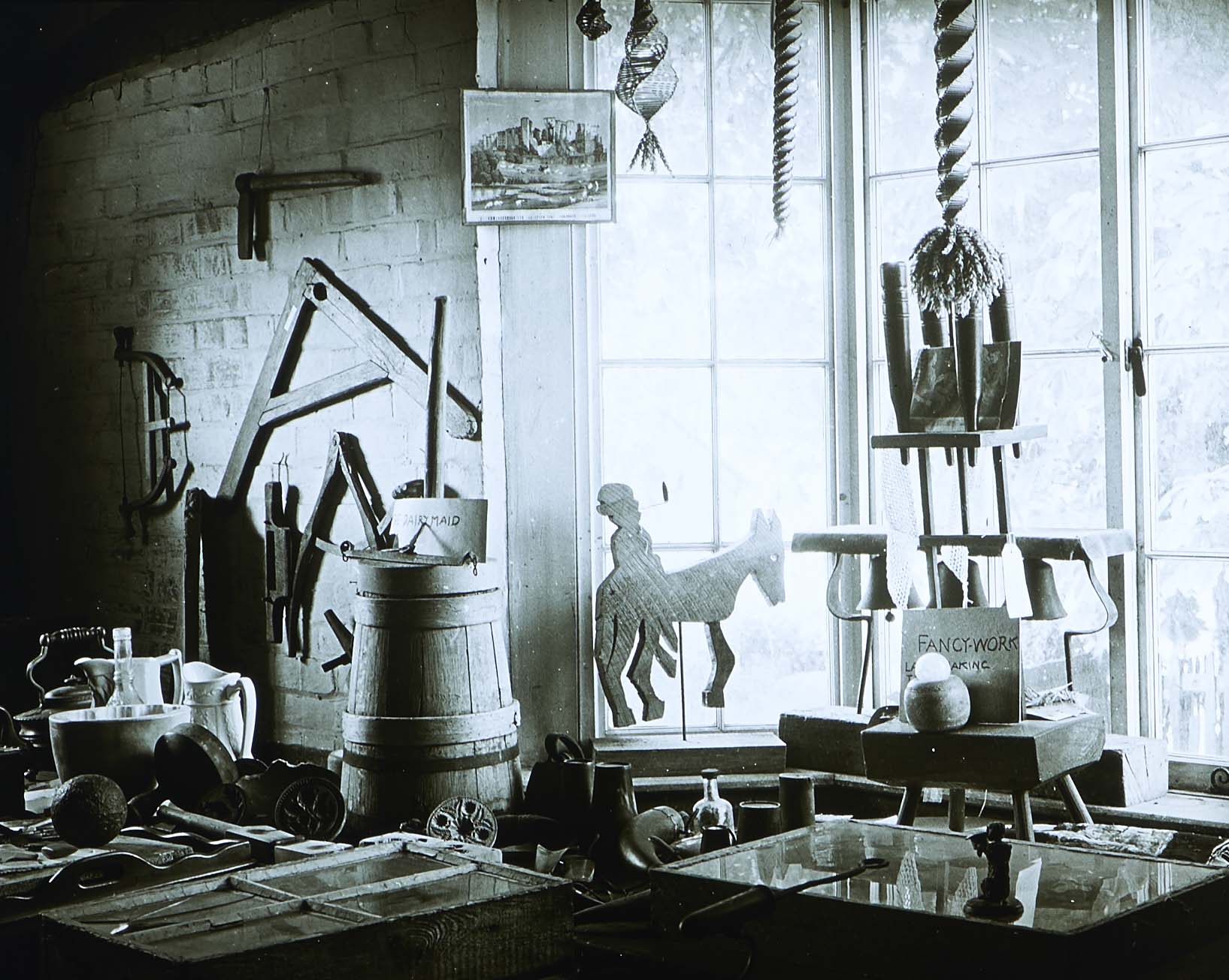
22. Sister Lavinia
Henry Owen Vaughan, Photographs of Miss Smith’s Museum, 1937–1943
These photographs show the private museum of ‘Sister’ Lavinia Smith. After her death in 1944, her artefacts became a founding collection at The MERL. Born in America, she worked for many years in England, retired to a village, and was inspired to gather rural objects. Having done much to chart the history of her collection we found evidence to suggest that was anti-Semitic. It can be hard to discuss flaws of foundational figures but we must acknowledge and reject racism.
Read about MERL Volunteer Kaye Gough’s journey of discovering more about Lavinia Smith.
MERL P DX2049 PH5_43
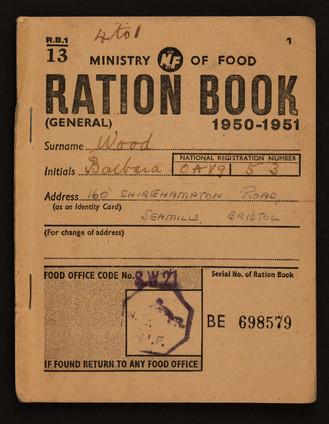
23. Ration Book
Ministry of Food, Ration book and coupons, 1950–1951
A book of this date shows that rationing lasted long after the Second World War. Papers include coupons for food, clothes, tea, soap, and sweets. Rationing ensured people had what they needed in the face of blockades and shortages. The owner, Barbara Wood, was evacuated from Bristol during the war but living there again when she used this book. As a registered vegetarian she was entitled to extra cheese in place of meat. Concerns about access to goods and food security are important now, much as they were in the mid-twentieth-century.
Read discussion of the ration book by Professor Julie Lovegrove and Dr Rosalind Fallaize.
See educational resources that include Barbara Wood’s wartime experiences.
MERL 2019/55
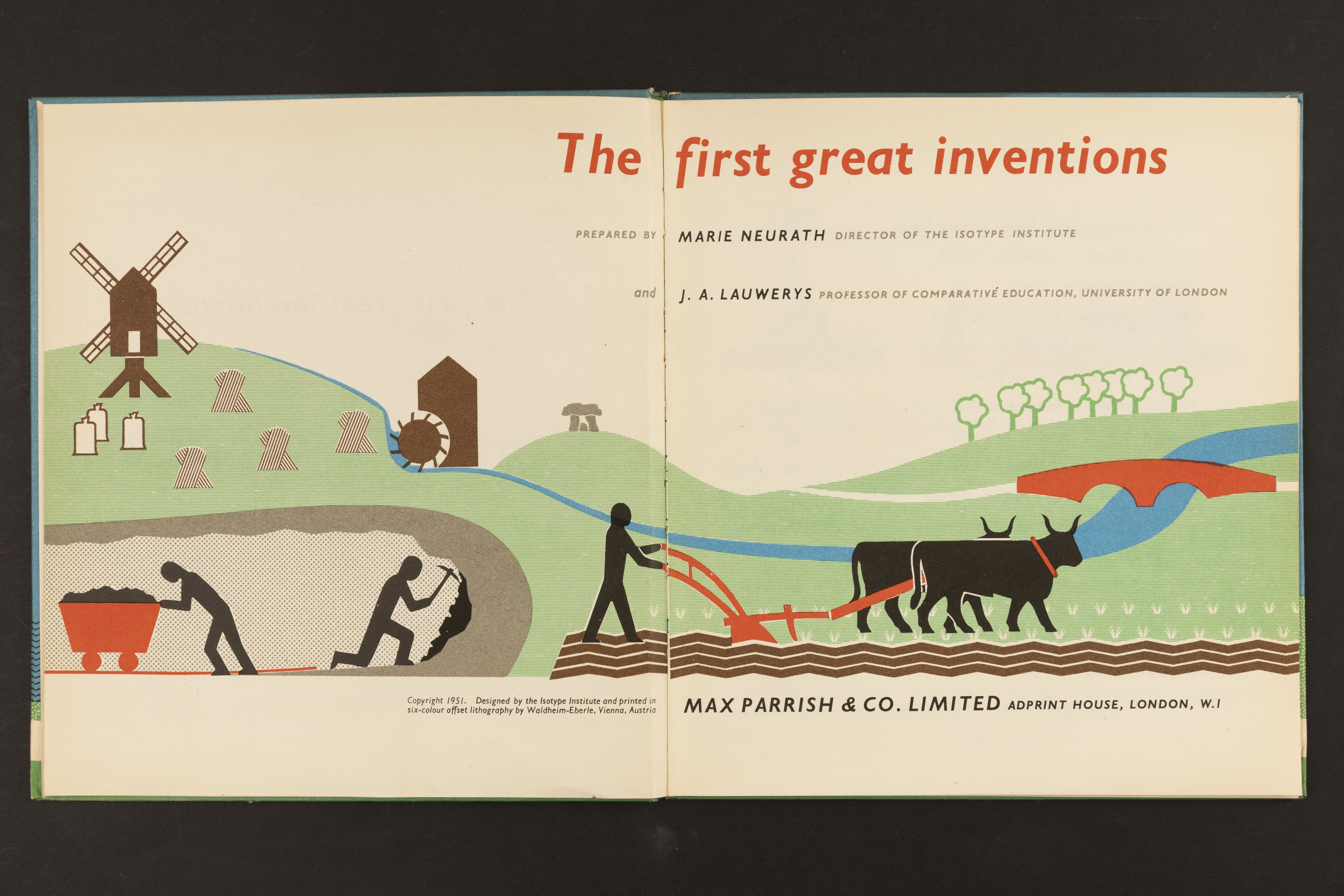
24. Great Inventions
Marie Neurath and Joseph Lauwerys, The first great inventions (Max Parrish, 1951)
This children’s book used graphic tools called isotypes to tell the story of innovation in a simple way. Its illustrator, Marie Neurath, helped pioneer this design approach. One section explored power sources that played a part in how people farmed. Others looked at wagons and carts. The book showed that much innovation stems from rural contexts. The spread on lamps and lighting told a linear story, echoing the way collectors arranged objects to tell stories of change.
Read a more detailed exploration of this book by Professor Sue Walker.
Special Collections Library

25. National Parks
Ministry of Town and Country Planning, National Parks and Access to the Countryside (London: HMSO, 1950)
This booklet was published just before the first National Parks were established. It told the hard-fought story of landscape protection and access. Images on the cover suggested how such Parks would be used. The idea of such spaces emerged in the late-nineteenth century. It was bolstered by the National Trust, the Council for the Preservation of Rural England, and other movements. It was not until the 1940s that the idea was enshrined in law and the first National Parks only came into being in 1951.
Read more about early National Parks history in this piece by Landscape Architect Mark Loxton.
MERL LIBRARY PAMPHLET 2860 BOX 07/05

26. Buildings of England
Nikolaus Pevsner, Cornwall (Harmondsworth: Penguin Books, 1951)
Published in 1951, Cornwall was the first book of The Buildings of England. Over the next 23 years the series grew to 46 volumes covering every county. It was written by art and architectural historian Nikolaus Pevsner. Aimed at discerning tourists, the series took a county-by-county approach. It remains popular for several reasons, including the exhaustive detail and opinionated criticism of particular buildings. This oft-cited reference series has helped to define the English countryside.
Read a response from our resident Pevsner enthusiast, Adam Lines.
University Library 720.942-PEV/NOT
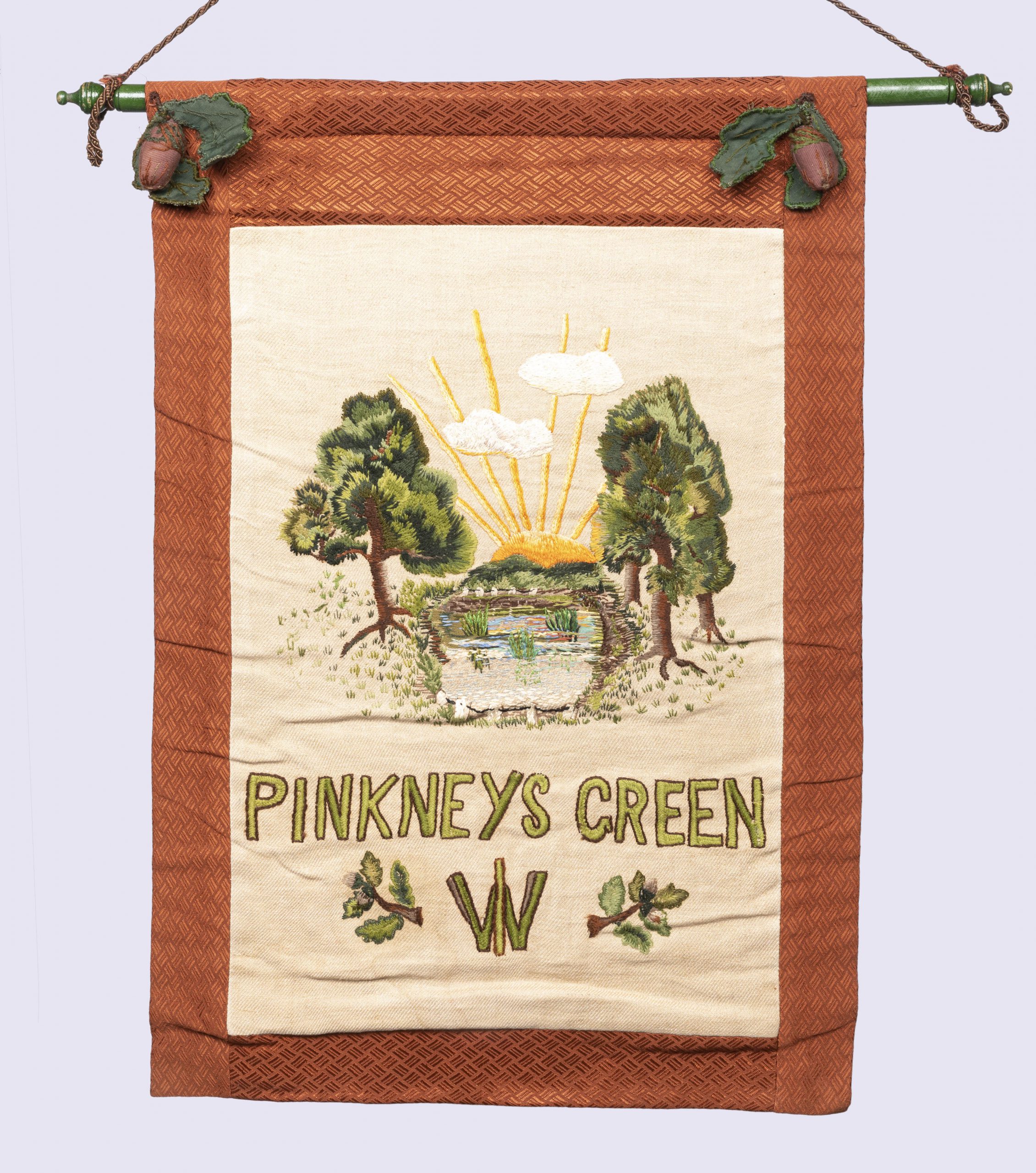
27. Women's Institute
Pinkneys Green WI, Women’s Institute Banner, circa 1951
The National Federation of Women’s Institutes was formed in 1915 and has gone on to play a role in supporting equality in education, social improvements, and environmental responsibility. After the Second World War the WI expanded and the 1950s became its most popular period. This banner was stitched by women from Pinkneys Green in around 1951. Collective artworks like these banners were a way to celebrate community identity. They reveal the inventiveness and artistry of their makers.
Read a detailed exploration of this banner and the history of the WI by Dr Rosemary Shirley.
MERL 2007/48/1-2
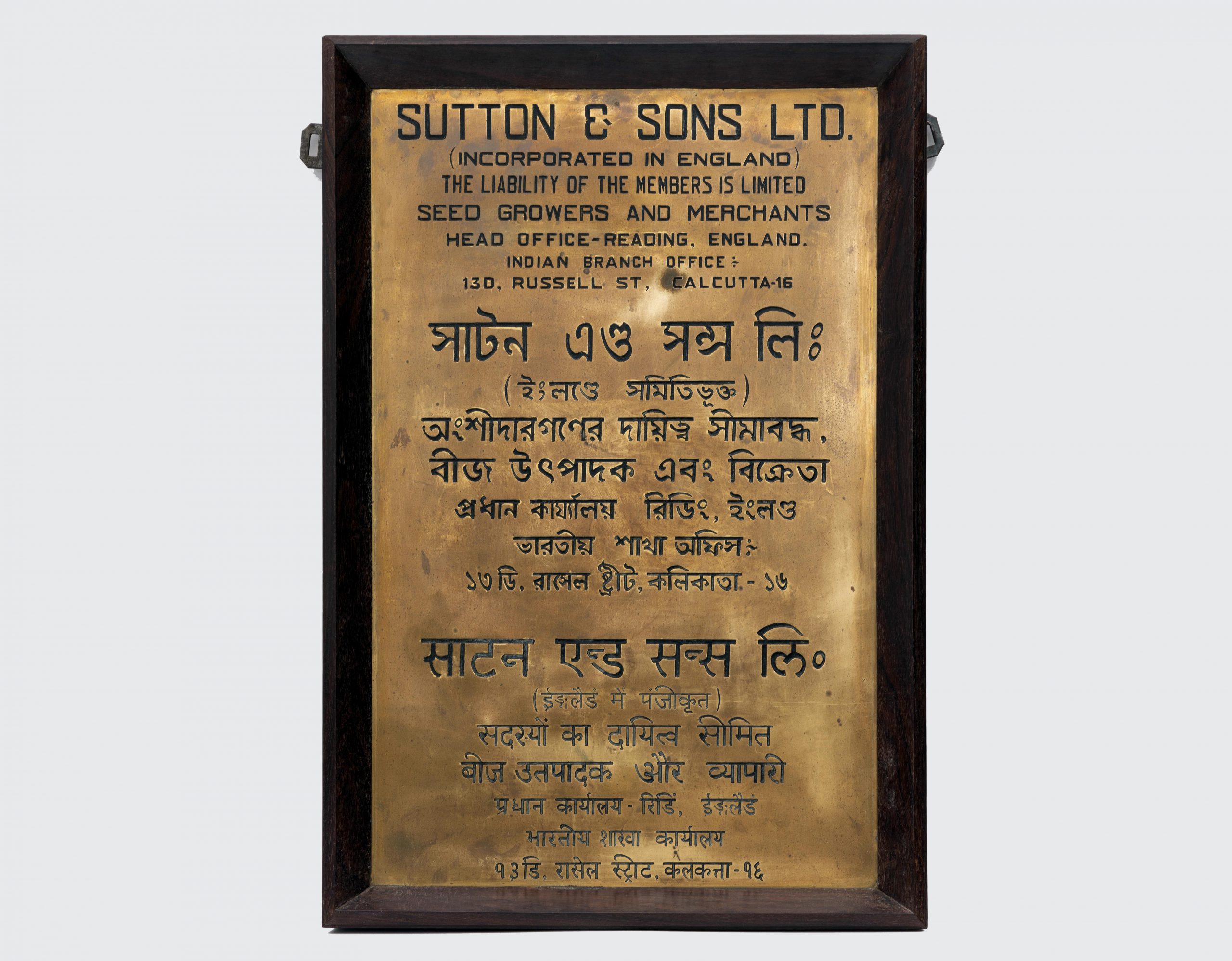
28. Sutton's Seeds Sign
Sutton & Sons Ltd, Indian branch office sign, circa 1950s
In 1912, the Reading firm Sutton & Sons established a branch office in Calcutta. The sign was in three languages—English, Hindi, and Bengali. Indian independence came in 1947 but colonial structures persisted. The last British Director of the Calcutta branch retired in 1972 and was given this sign as a gift. The parent company had more agricultural market share than those trading under the Sutton’s name today. It may therefore have been part of systems that exerted some degree of control over farmers.
Read insights from Surajit Sarkar of Ambedkar University, Delhi, written to coincide with the 19th Congress of the International Association of Agricultural Museums, AIMA 2021.
Click here to read a poem about this object by a student from The Langley Academy.
See the sign in an online exhibition about colonial India, developed with the help of students from the Department of History at the University of Reading.
MERL 2019/50
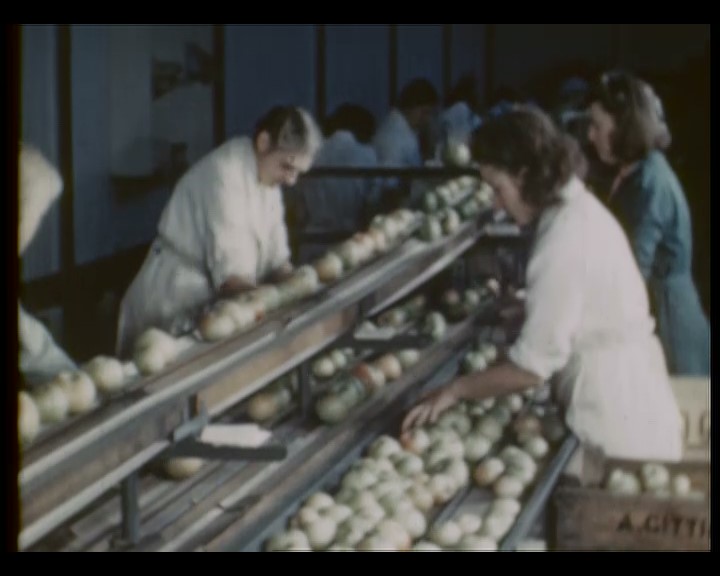
29. Apple Store
Colour film, Storage of Apples, 1951
This film was made to improve apple storage and extend their season. It was part of the Ministry of Agriculture film library, and was probably shown to producers and the public. The MERL has worked hard to preserve these films. Initiatives such as the FIELD project have been helpful. The Museum is sharing details with the European Rural History Film Association in the hope that we learn more about the international distribution of such films.
You can watch the film online here, using the University of Reading Virtual Reading Room.
Click here to read reflections on film collections by Principal Archivist, Caroline Gould.
You can view a short compilation of footage from other Ministry of Agriculture films here.
MERL TR MAFF PH6/73
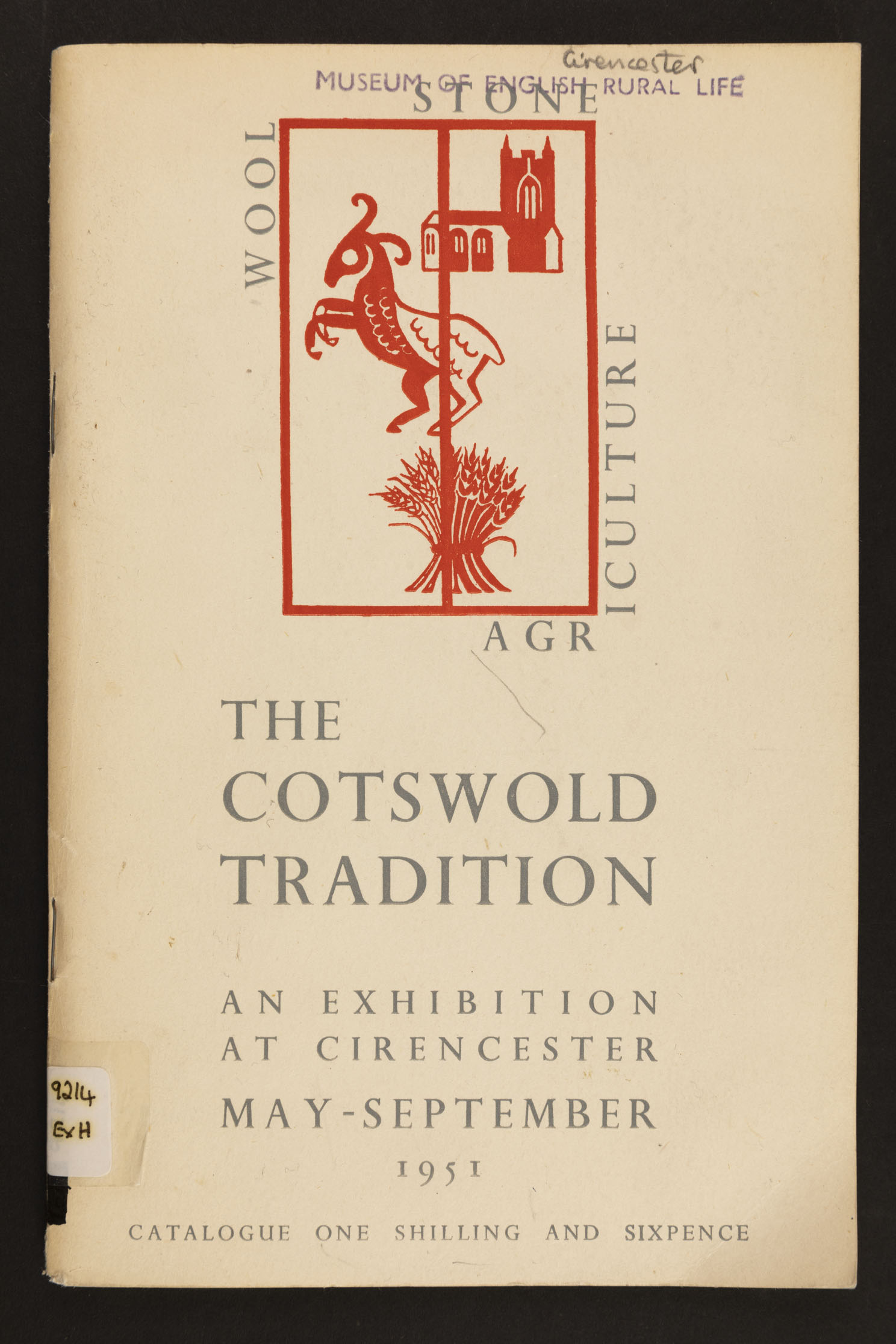
30. Cotswold Tradition
Exhibition catalogue, The Cotswold Tradition, 1951
This catalogue reveals how objects given to The MERL in early 1951 were displayed at Cirencester Park later that same year. They were lent to a Festival of Britain exhibition exploring Cotswold wool, stone, and agriculture. Its ambitious displays included the quirky installation of a giant wicker hand. Some considered it the best Festival contribution outside London.
MERL Library 9214 COT
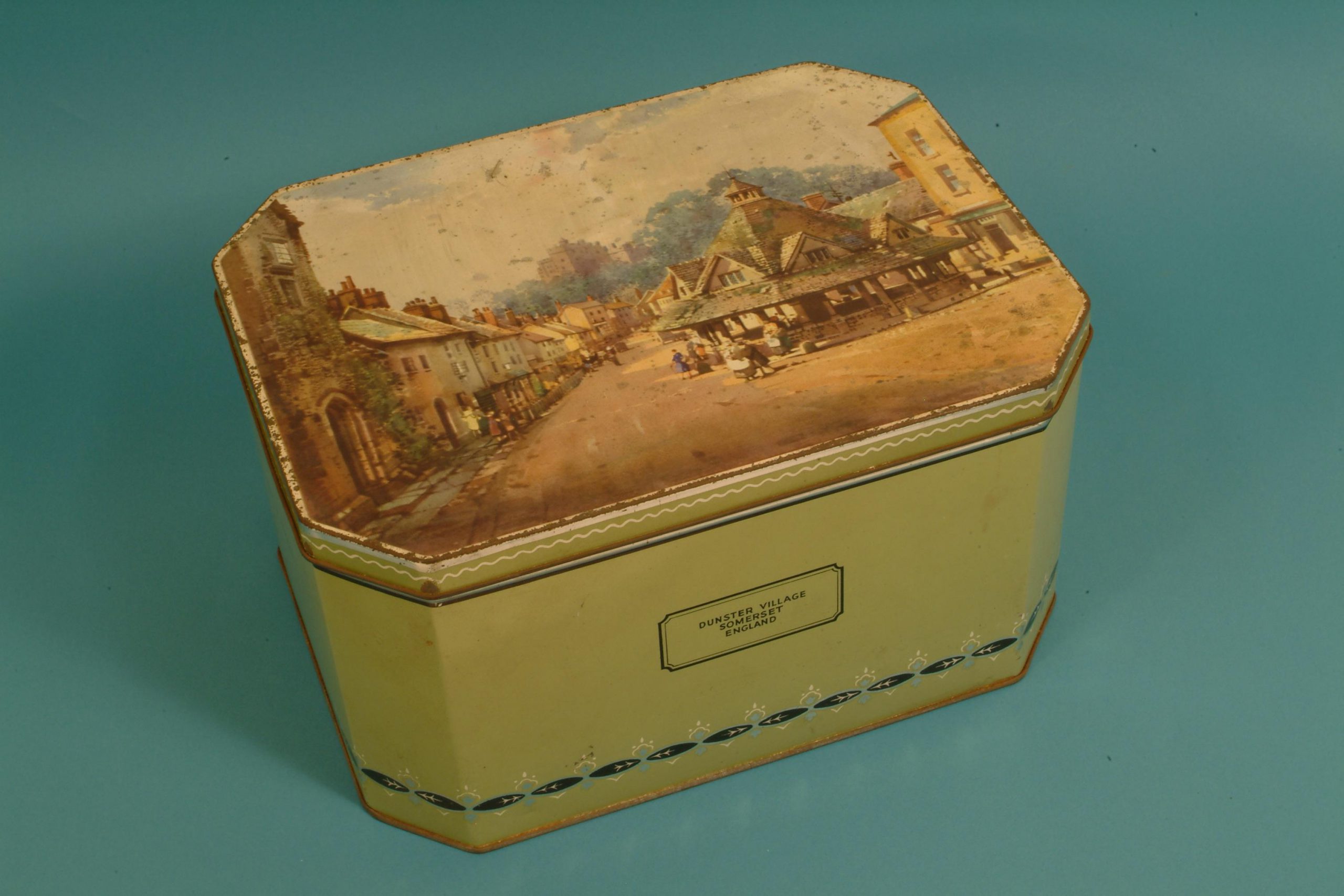
31. Biscuit Tin
Biscuit tin, Huntley and Palmers, 1951–1952
This biscuit tin has an image of Dunster village in Somerset. After a decade of austerity, this design tapped into nostalgia for life before the Second World War. Huntley & Palmers started life in 1822 as a small bakery founded by Thomas Huntley and by 1900 had become the world’s largest biscuit maker. At its peak the company employed over 5,000 people. The company was famous for decorative tins like this.
Read a response to this tin by Museum Manager of Reading Museum, Matthew Williams.
Reading Museum (REDMG 1992.2.384)
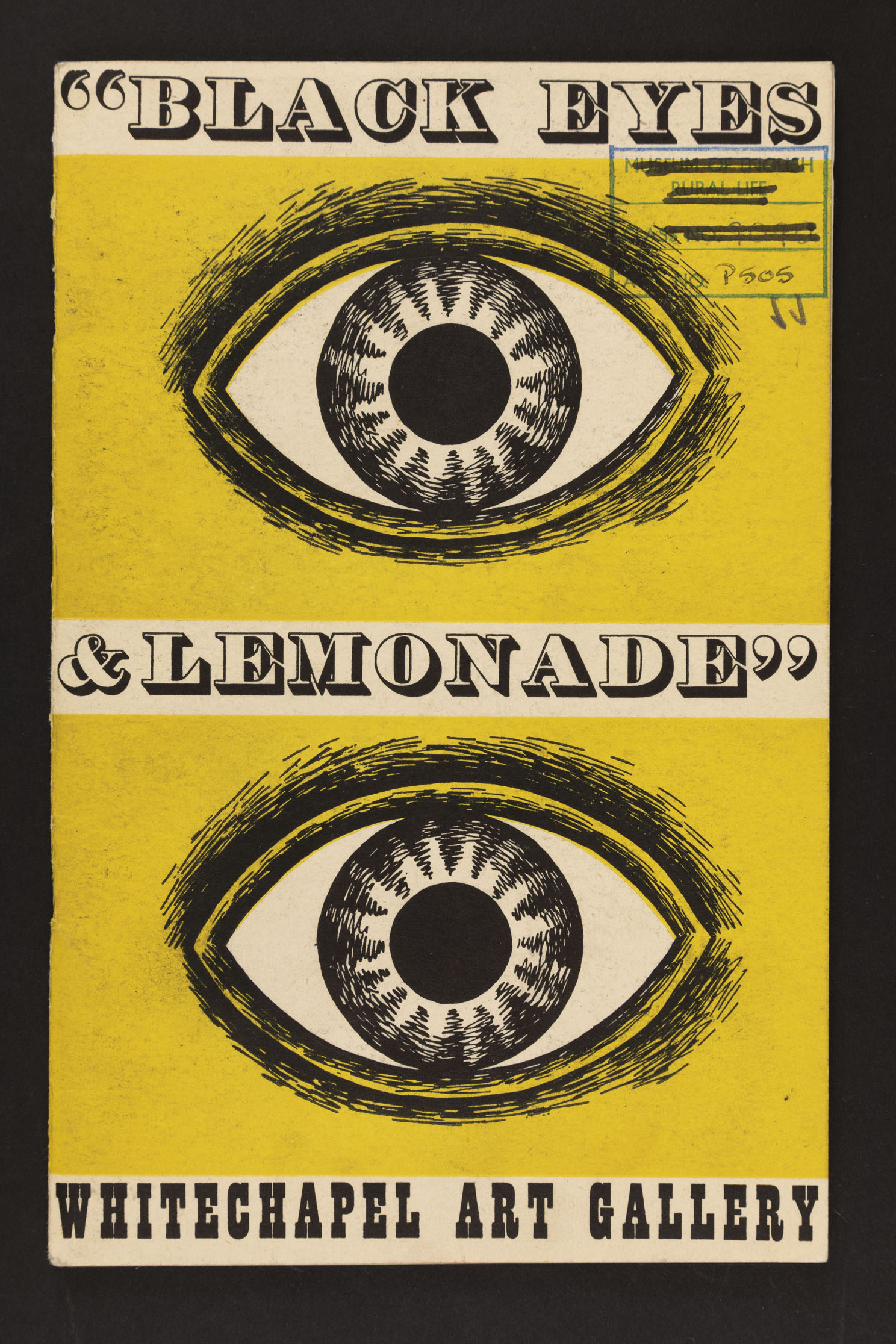
32. Black Eyes and Lemonade
Exhibition catalogue, Black Eyes and Lemonade, 1951
This exhibition was mounted by artist Barbara Jones as part of the Festival of Britain. Her focus was on the eclectic and the everyday. The displays included an assembly of objects as diverse as Huntley & Palmer biscuits and corn dollies by Fred Mizen. Jones also published a book called The Unsophisticated Arts in 1951, which offered a similar exploration of popular art. Comparable ideas came to the fore in several other mid-century exhibits and publications.
Click here to explore a creative response to this item by artist and facilitator Jessica Starns.
Click here to read a response by Special Collections Librarian, Connie Bettison.
Special Collections Great Exhibition Collection 12
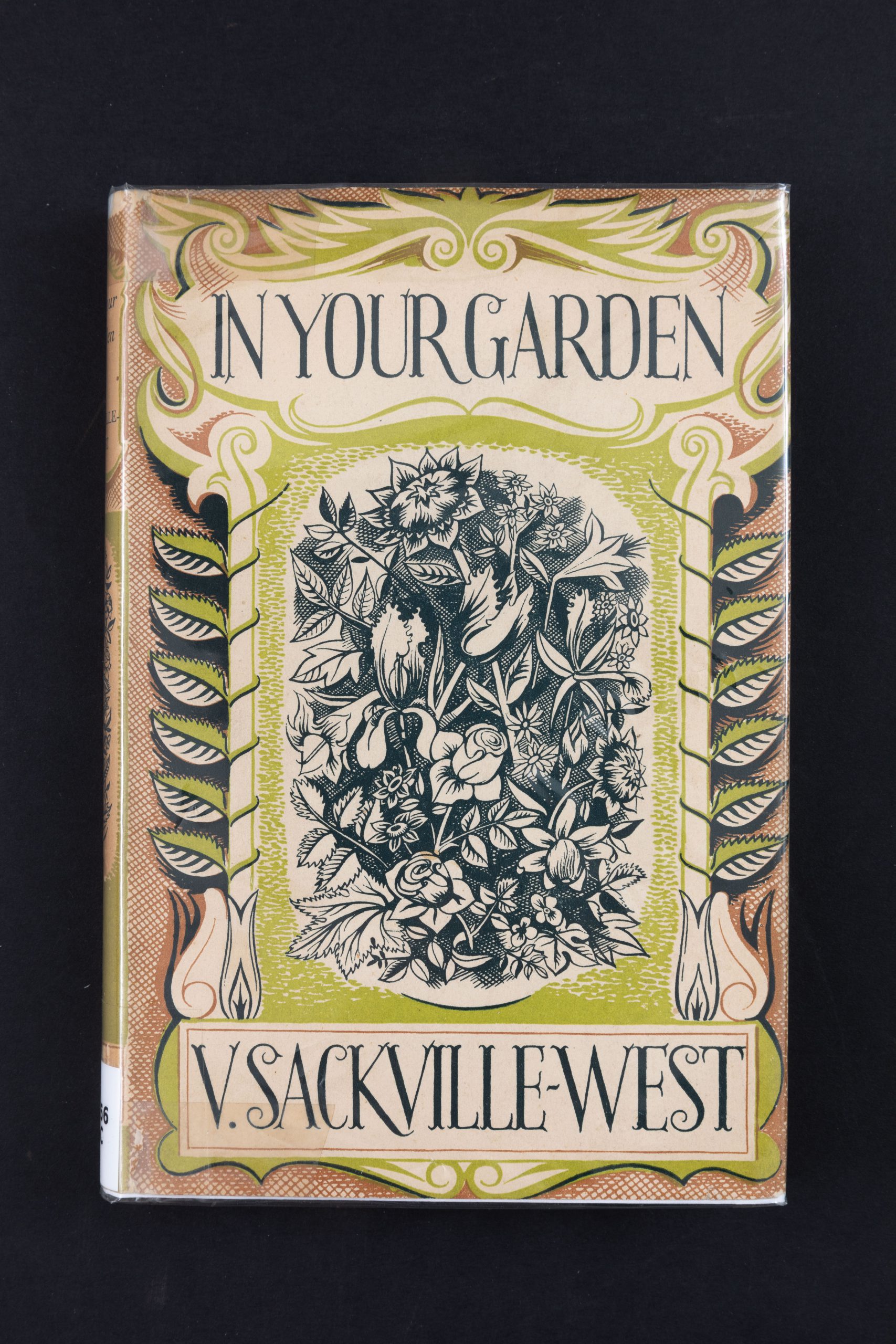
33. In Your Garden
Vita Sackville-West, In Your Garden (London: Michael Joseph, 1951)
Vita Sackville-West was an influential voice in mid-century rural life. In 1939, her plan to develop a ‘White Garden’ at her Sissinghurst home was interrupted by conflict. After the war, Sackville-West began a newspaper column recording changes that she and her husband made at Sissinghurst. In Your Garden emerged from these writings, charting seasonal change, offering practical suggestions, and helping to shape English gardening. In 1949, the ‘White Garden’ idea resurfaced and it was first shared with an eager public in 1950.
Click here to read a response to this book by writer and producer JC Niala.
Click here to read about a 51 Voices ‘In Your Garden’ Takeover Day with our under-fives group Friday Fledglings.
MERL Library 4756-S

34. Festival Landscapes
Peter Shepheard, Landscape design sketchbook, 1951
During the late 1940s the architect, planner, and landscape architect Peter Shepheard honed his craft on the Greater London Plan and through work for the Ministry of Town and Country Planning. This sketchbook dates to early 1951 when he was working on final plans for the Festival of Britain. He introduced structural planting, made contributions to the built environment, and worked on spaces that he dubbed ‘space left over in planning’ or ‘sloip’.
Read a detailed discussion of the sketchbook by Annabel Downs.
MERL AR SHE DO1/1/10
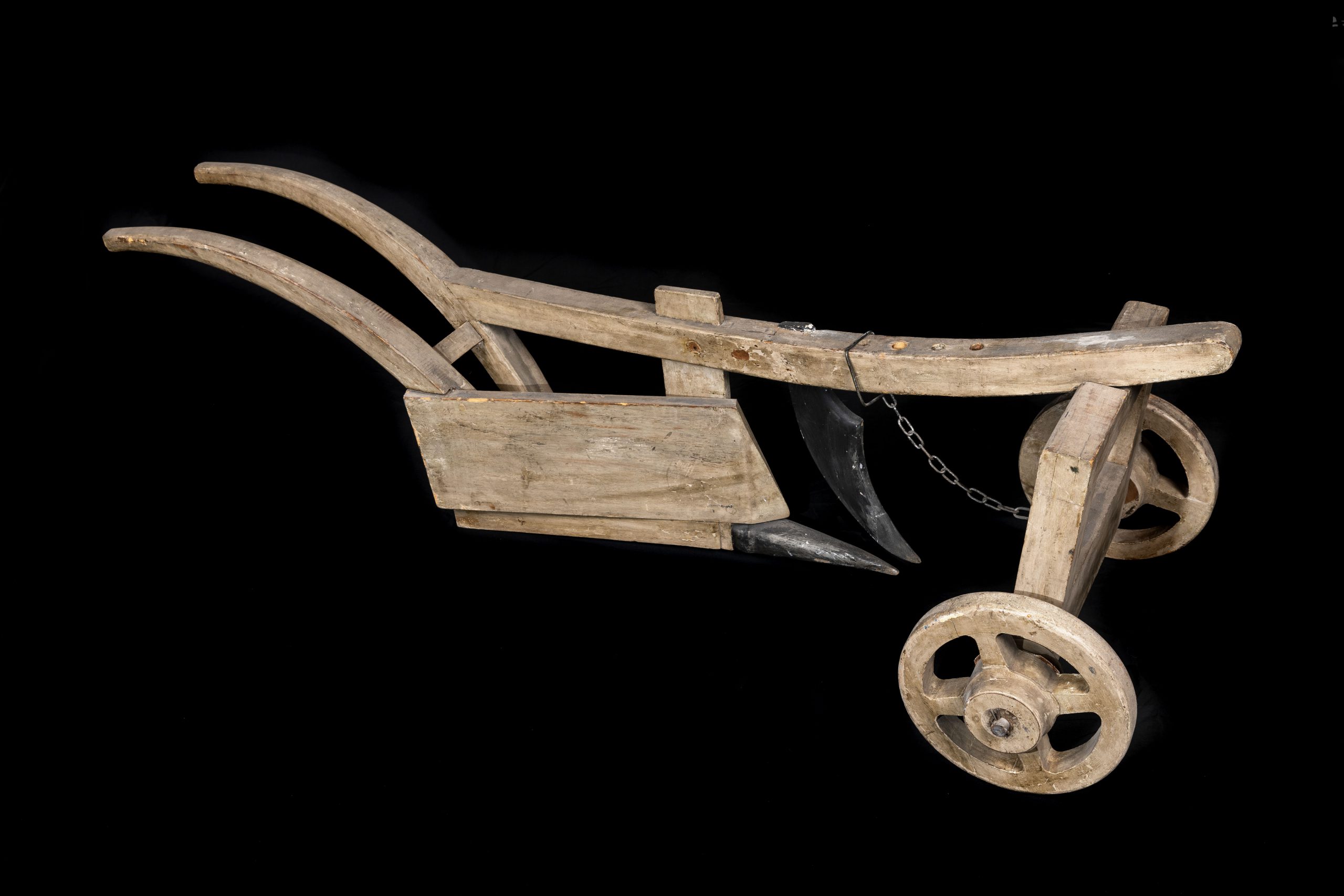
35. Ploughs and Progress
Set of model ploughs, Festival of Britain, 1951
These models were made for the Country Pavilion of the Festival of Britain. Their depiction of farm progress was echoed in the Science Museum’s agriculture galleries, which also opened in 1951. Such mid-century exhibitions reinforced dominant ideas but failed to reflect the range of farming futures on offer. Indeed, a focus on tillage contrasted with the aims of the newly-founded Soil Association (1946), which championed approaches that led to the ‘no-till’ farming of today.
Read a response to these models from Collections Officer Madeleine Ding.
MERL 52/65-68, 70
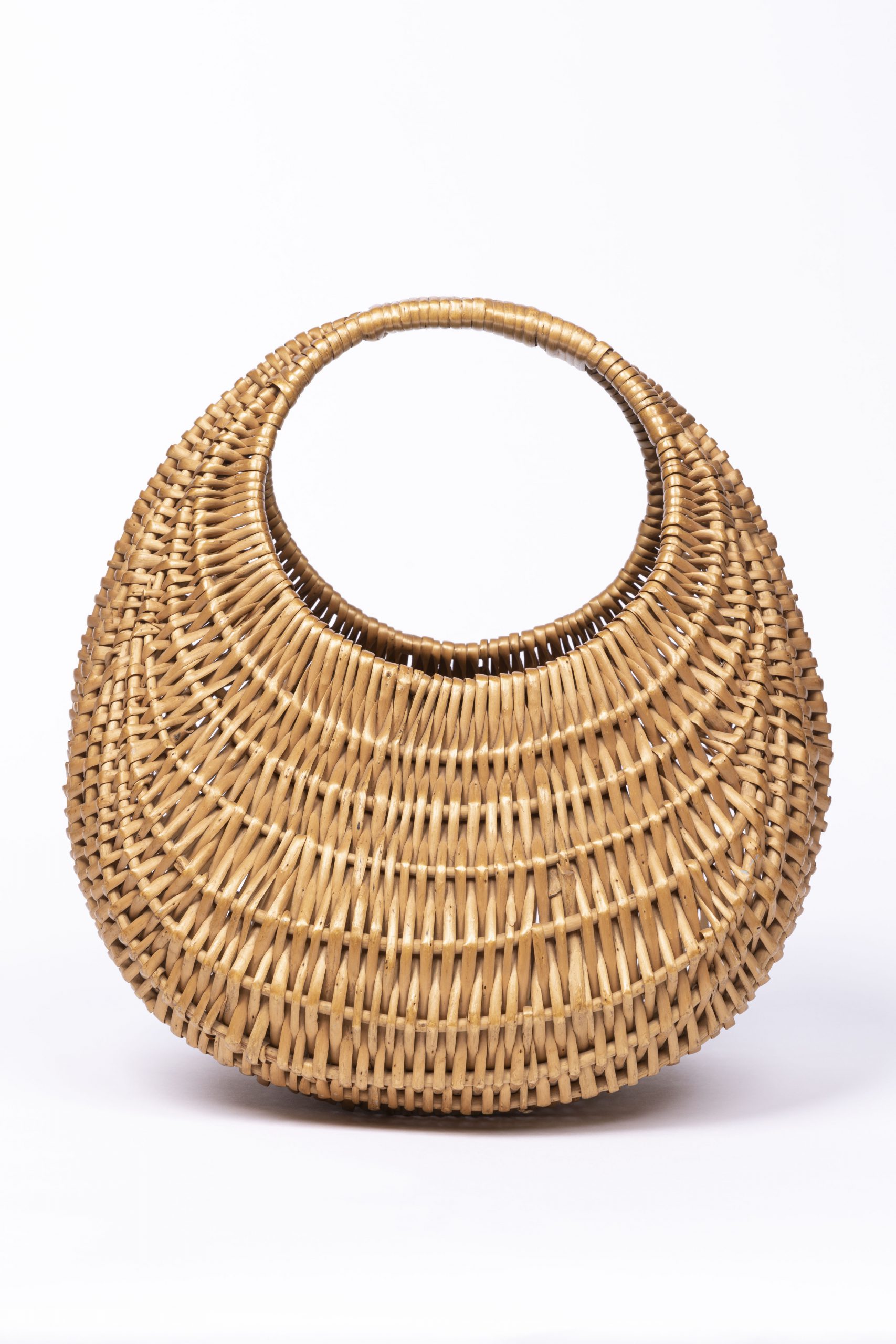
36. Chicken in a Basket
Poultry basket, Ose, 1945–1946
Muriel Rose bought this traditional Skye basket, or Ose, in the 1940s. It was one of many items gathered for a British Council Exhibition of Rural Handicrafts, which toured overseas in 1946 and 1947. In 1951, a similar ose was included in Living Traditions, a Festival of Britain exhibition in Edinburgh. In later years such baskets became popular as handbags. Bridget Bardot was seen using one and demand exploded. Similar baskets were mass-produced in plastic.
Click here to find out more from Greta Bertram, Curator of the Craft Study Centre.
Watch this space for Catherine Beaumont’s experience of making Ose baskets.
MERL 60/770
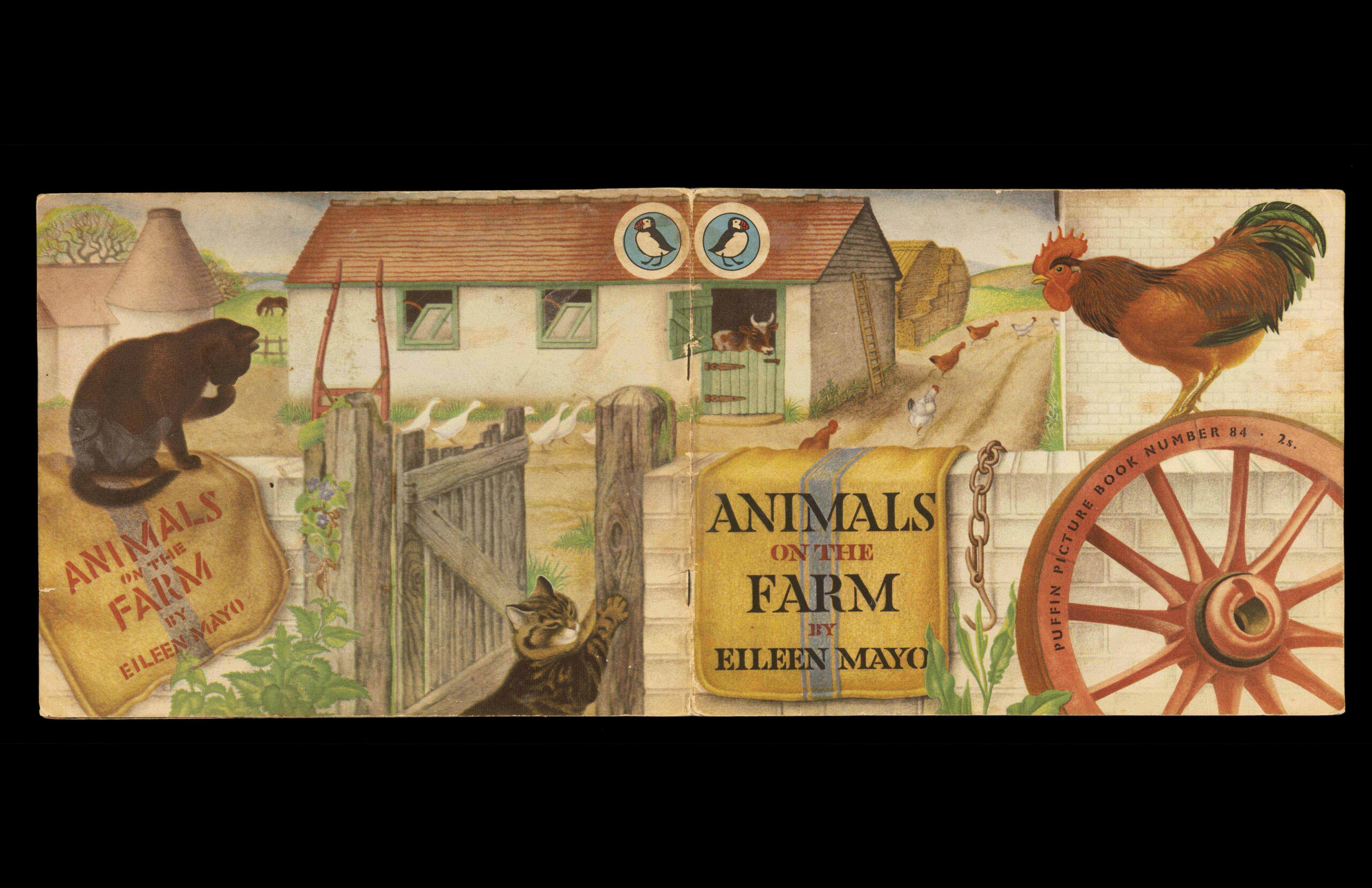
37. Another Animal Farm
Eileen Mayo, Animals on the Farm (Harmondsworth: Penguin, 1951)
Created by artist Eileen Mayo, this book offered a nostalgic vision of farming with hand-powered shearing machines, traditional hurdles, and old wagons. Only in the text about heavy horses did it refer to the creeping impact of mechanisation. The book followed other rurally-themed volumes in the Puffin Picture Book series including A History of The Countryside in 1944. This earlier volume faced modernity head-on, referring to crawler tractors, wartime land reclamation, and ribbon development.
Watch this space to read a more detailed examination of this book by Special Collections Librarian Fiona Melhuish.
Children's Collection 630-May
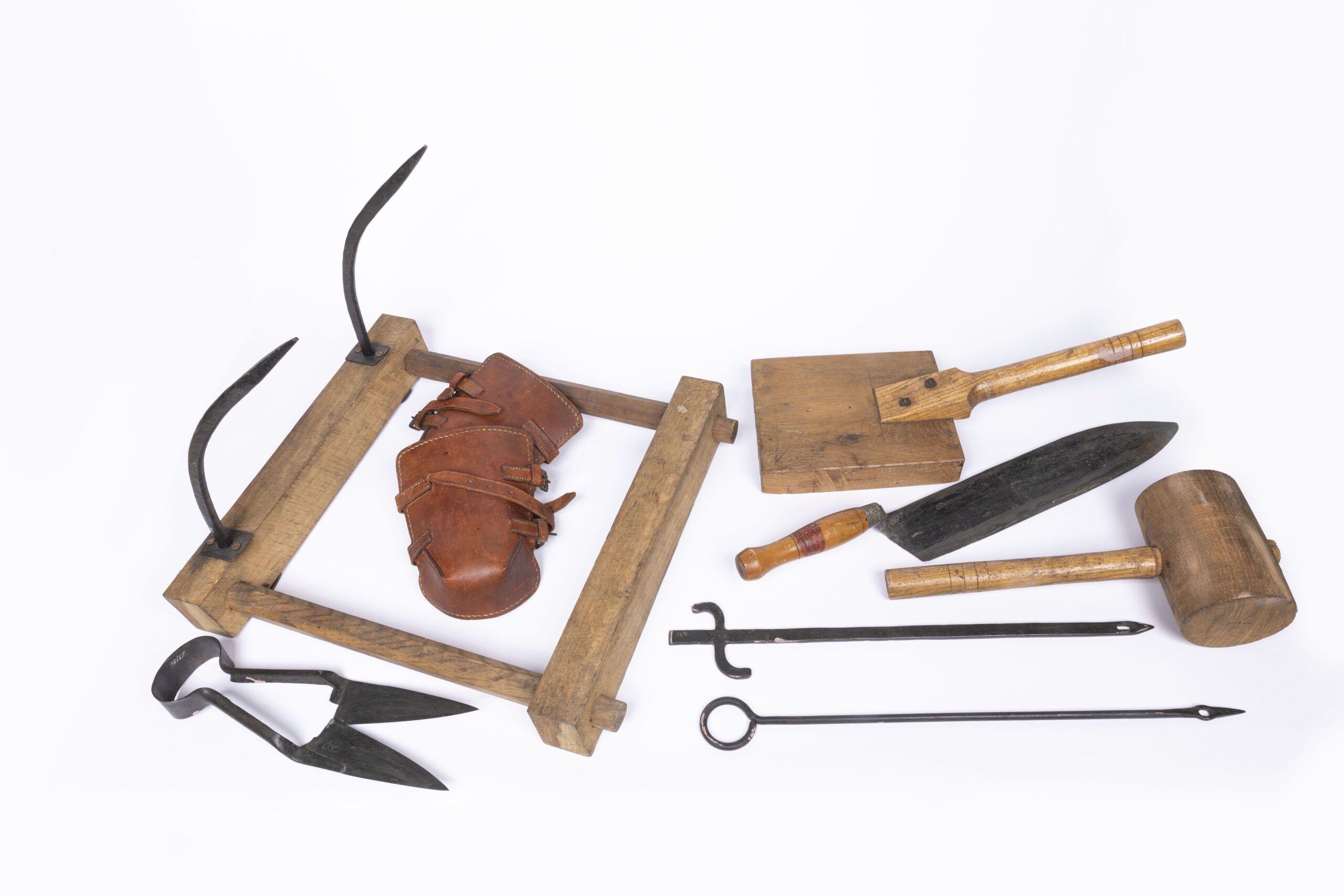
38. Thatching Tools
Festival of Britain, Thatching tools, 1951
These tools were exhibited at the Festival of Britain. They were shown alongside sculptures by straw craftsman Fred Mizen. Live demonstrations of other trades featured at several Festival sites. Not far from the straw displays at Southbank, blacksmith Thomas Haywood showcased metalworking techniques. Heritage skills like blacksmithing and thatching declined considerably in the twentieth century. Although thatching is still active and vibrant, its precarity is shown by its continued listing by the Heritage Crafts Association.
Click here to see an amazing film by Mark Hannant, showing Master Thatcher Nick Walker exploring these objects for the very first time (4:25 mins)
MERL 52/82-83, 85-91, & 79/64
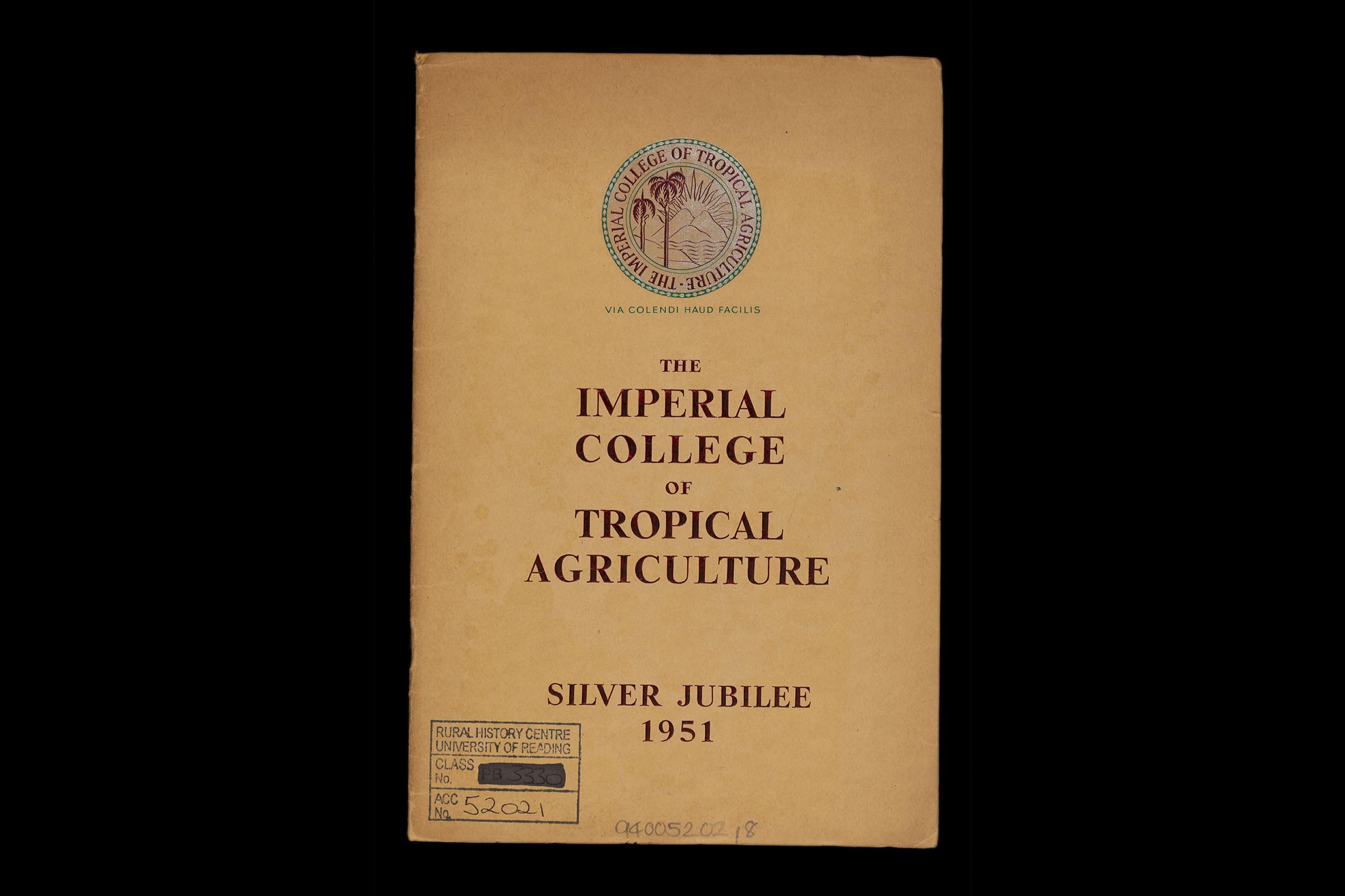
39. Tropical Teaching
Imperial College of Tropical Agriculture: Silver Jubilee 1951 (London: ICTA, 1951)
The Imperial College of Tropical Agriculture was founded in St. Augustine, Trinidad, in 1921. This booklet celebrated its first twenty five years. It was located in a colonial context and designed for imperial needs. Its rapid growth echoed mid-twentieth century agricultural extension work. Trinidad and Tobago gained independence in 1962. Today the same campus is home to the Agriculture Faculty of the University of the West Indies. The MERL’s copy of this booklet highlights the University of Reading’s own links with colonial agriculture.
Click here to see and read the complete booklet (low quality PDF).
Watch this space for a response to this booklet by Sarah Cardey.
MERL Library Pamphlet 3330-BOX 2/33
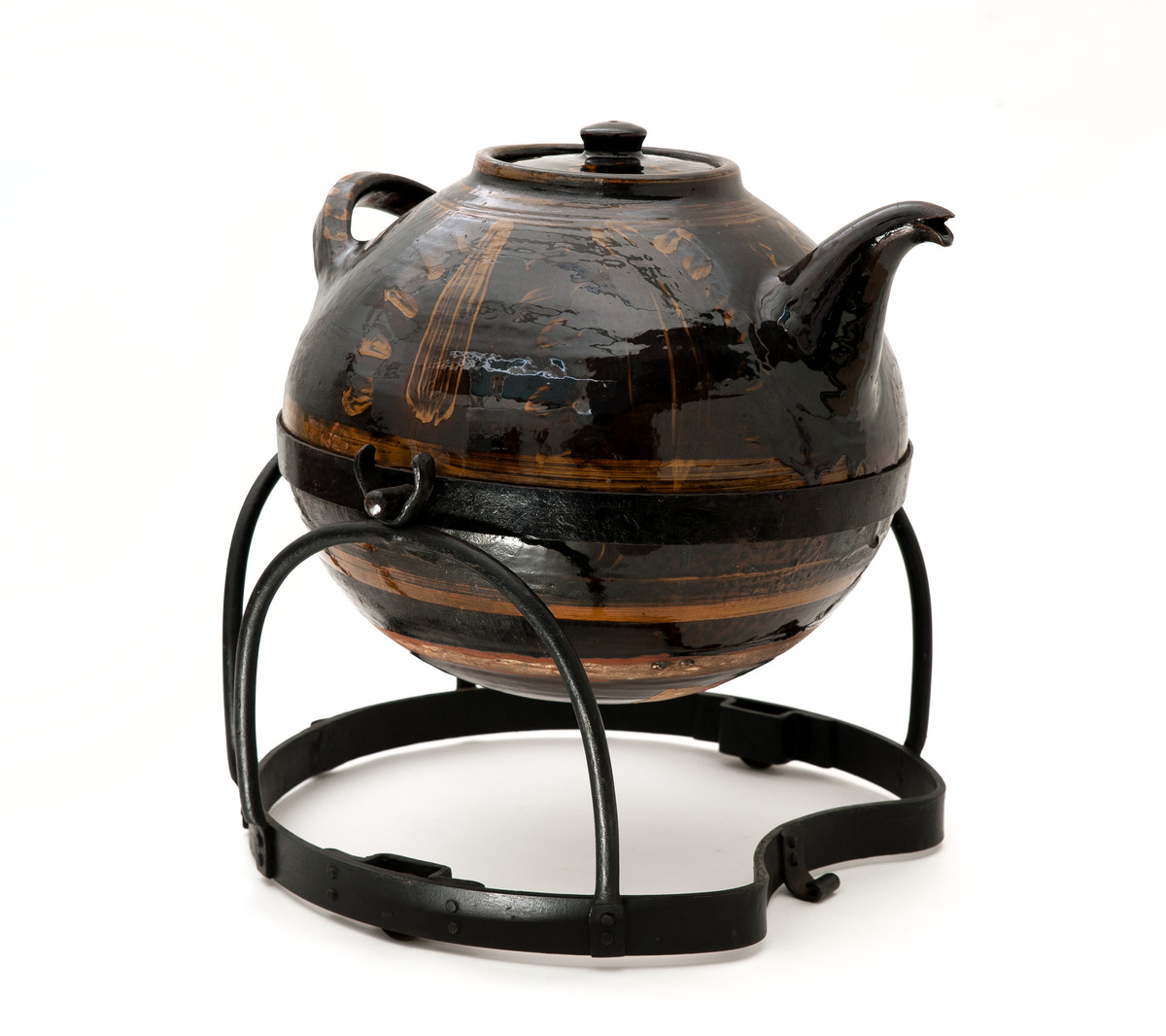
40. Giant Teapot
Michael Cardew, Large teapot on iron stand, 1940s
This teapot was made by Michael Cardew at Winchcombe Pottery, Gloucestershire. Part of the British Council’s craft collection, it may have featured in a New York exhibition of Modern British Crafts in 1942. It was certainly used in exhibitions that toured Australia and New Zealand in 1946. Like the teapot, Cardew himself went overseas and in 1951 he established a studio in Abuja, Nigeria. The teapot holds 6 ½ gallons (29.5 litres) and has a stand that allows it to be tipped easily. In the 1990s, Michael Cardew’s grandson, Ada Cardew, made a modern version.
Click here to see an online exhibition exploring cultural exchange, and the founding of a new rural institution, G.A.S Foundation, in Nigeria.
MERL 60/638/1-3
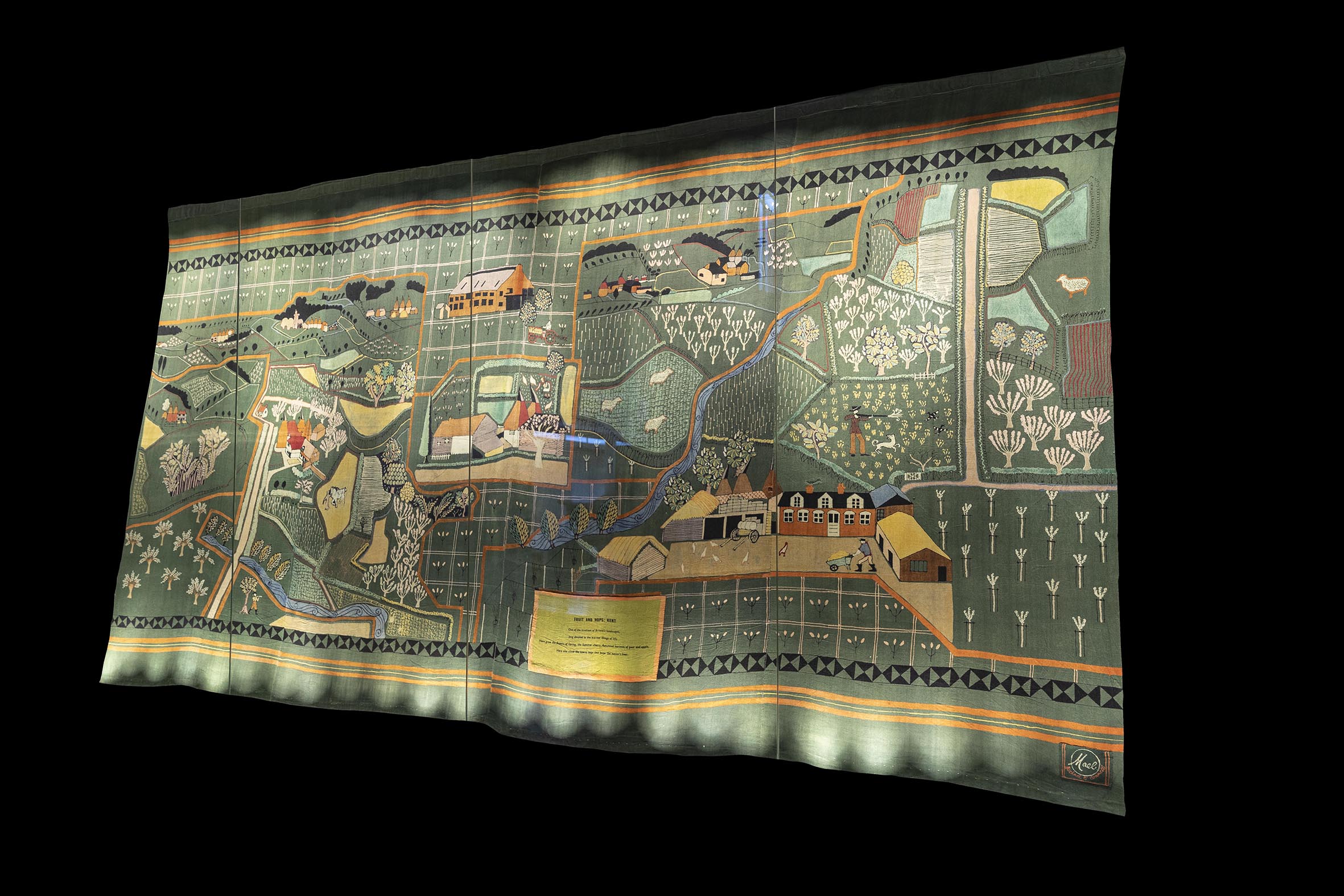
41. Huge Wall-Hangings
Michael O’Connell, Diversity of British Farming Wall-Hangings, 1951
This wall-hanging is part of a 46-metre long artwork made for the Country Pavilion of the Festival of Britain. It was designed by Michael O’Connell and created with the help of Iris and Betty Sheridan. Parts of the work have been displayed several times since this London debut. Just prior to their arrival at The MERL in mid-1952, the hangings were sent to Cape Town for Van Riebeck’s Festival, though it remains unclear if the textiles were actually used. This white supremacist event was boycotted by resistance organisations. The Kent panel (shown here) was displayed in The MERL from 2016 to 2021, at which point it was replaced by the Cheshire panel.
Read a conversation with Professor Leslie Witz to find out more about Van Riebeeck’s Festival.
Click here to read two poems responding to the wall-hanging, as written by University of Reading students.
Click here to watch Dr Ollie Douglas talking about this artwork.
Click here to access an old online exhibition about the wall-hangings.
MERL 63/18/1-9
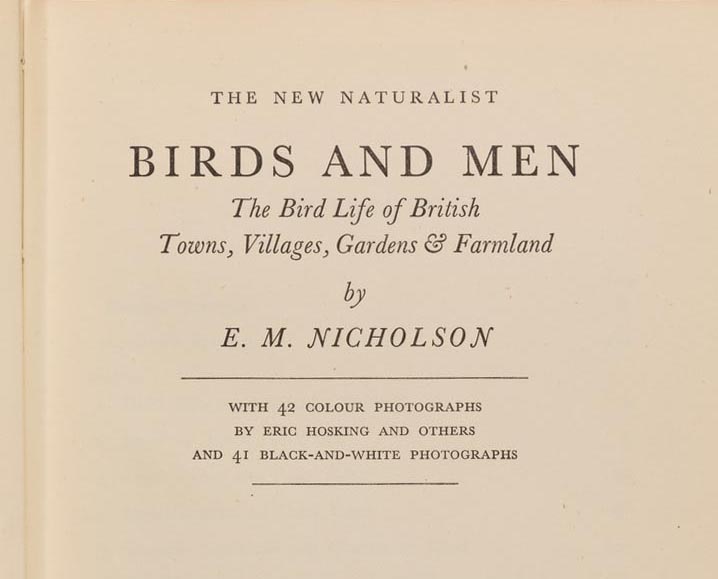
42. Birds and Men
Edward Max Nicholson, Birds and Men (London: Collins, 1951)
This book was part of the long running Collins New Naturalist series, which catered to growing numbers of amateur naturalists in post-war Britain. The author of this volume, Max Nicholson, was interested in the overlaps between urban and rural habitats, and argued that intensive farming was damaging wild bird populations. He introduced readers to new ecological approaches that remain relevant today. Nicholson went on to help establish many familiar conservation organisations.
Read a response to this book by nature writer Nicola Chester.
MERL Library 1840-NIC
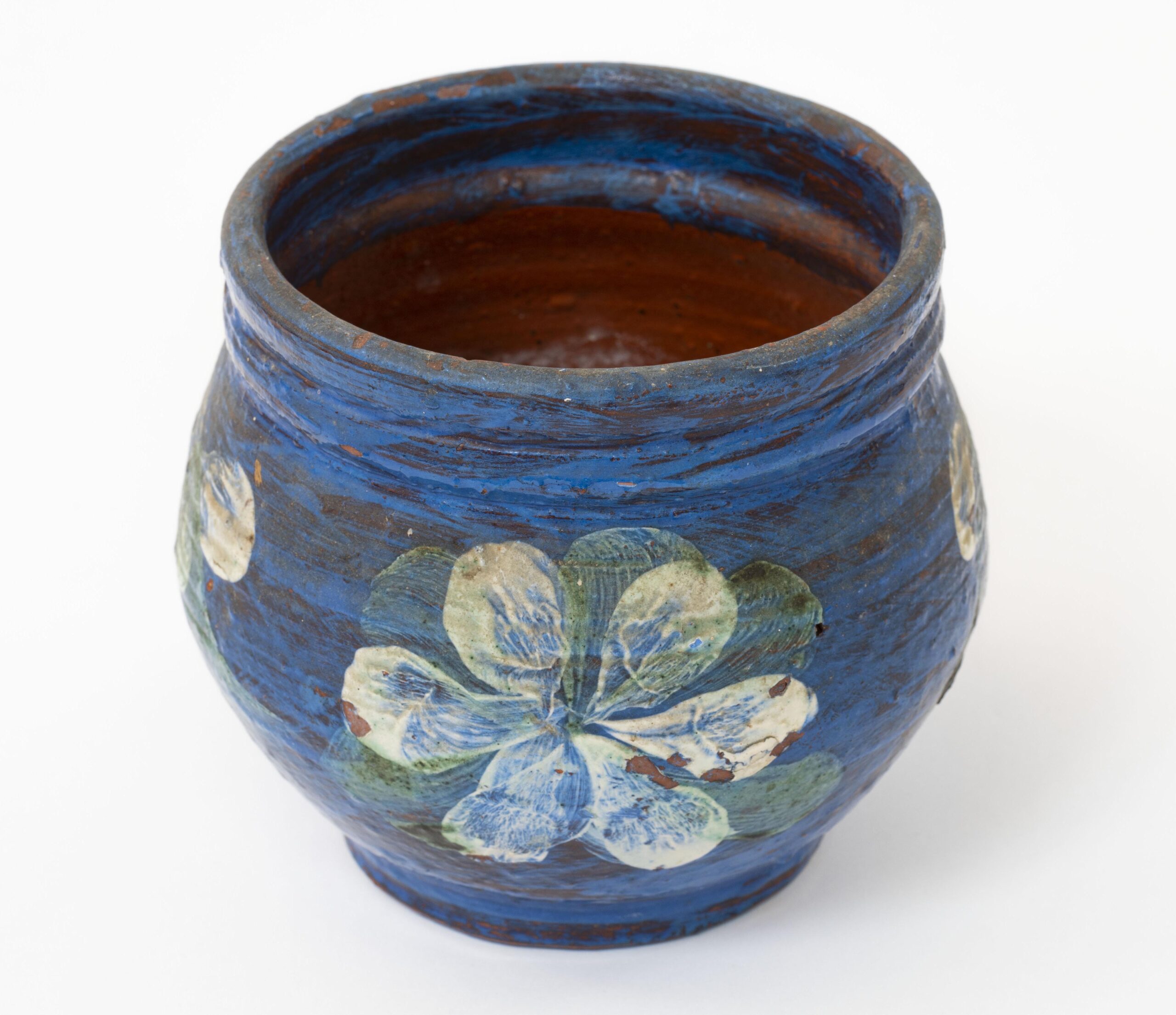
43. Domestic Flowerpot
Quentin Bell, Decorated plant pot, 1951
This pot was made by historian and potter Quentin Bell in 1951 and gifted to Grace Higgens, the housekeeper at Charleston house, Sussex. Bell’s parents retreated there every summer with their fellow Bloomsbury set creatives. Higgens was a highly valued member of the household and remained in service there until she retired in 1971. This simple gift echoes the influences of a relaxed mid-century style and more traditional rurality.
Read an account of this pot by Associate Professor Paddy Bullard.
MERL 2010/69
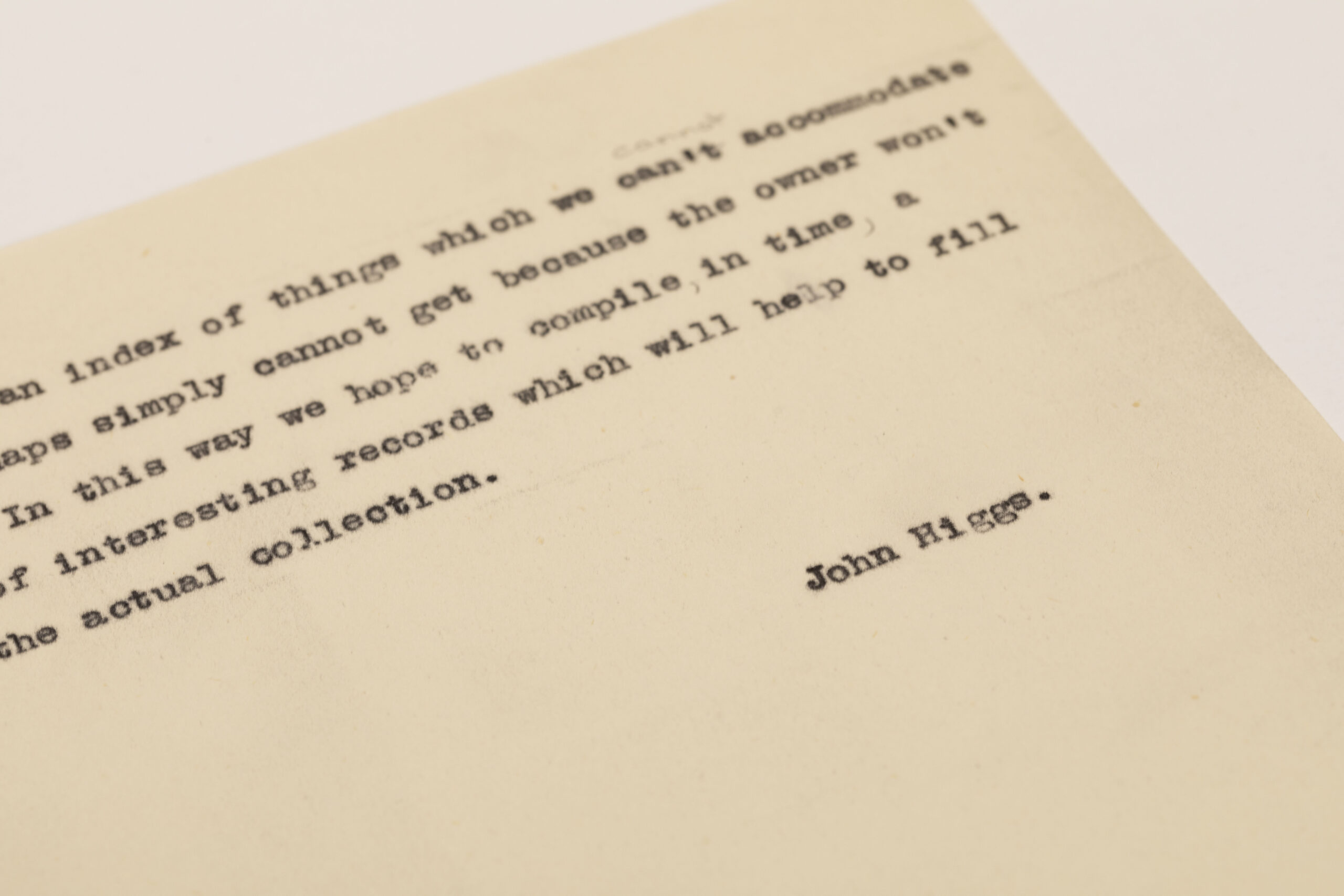
44. Making a Museum
John Higgs, Making a Museum (edited proof, 1951)
In this short essay, The MERL’s founding Keeper outlines an evolutionary manifesto for development of agriculture. We discover here that an ‘Agricultural Machinery Hall’ had already been dubbed ‘The Museum’ by students. One major departure from the vision expounded here is that the contextual details Higgs saw as key ultimately led us to describe change in a less progressionist way.
Click here to read the full-text of Higgs’ article.
Watch this space for a response to this item.
MERL D68/24
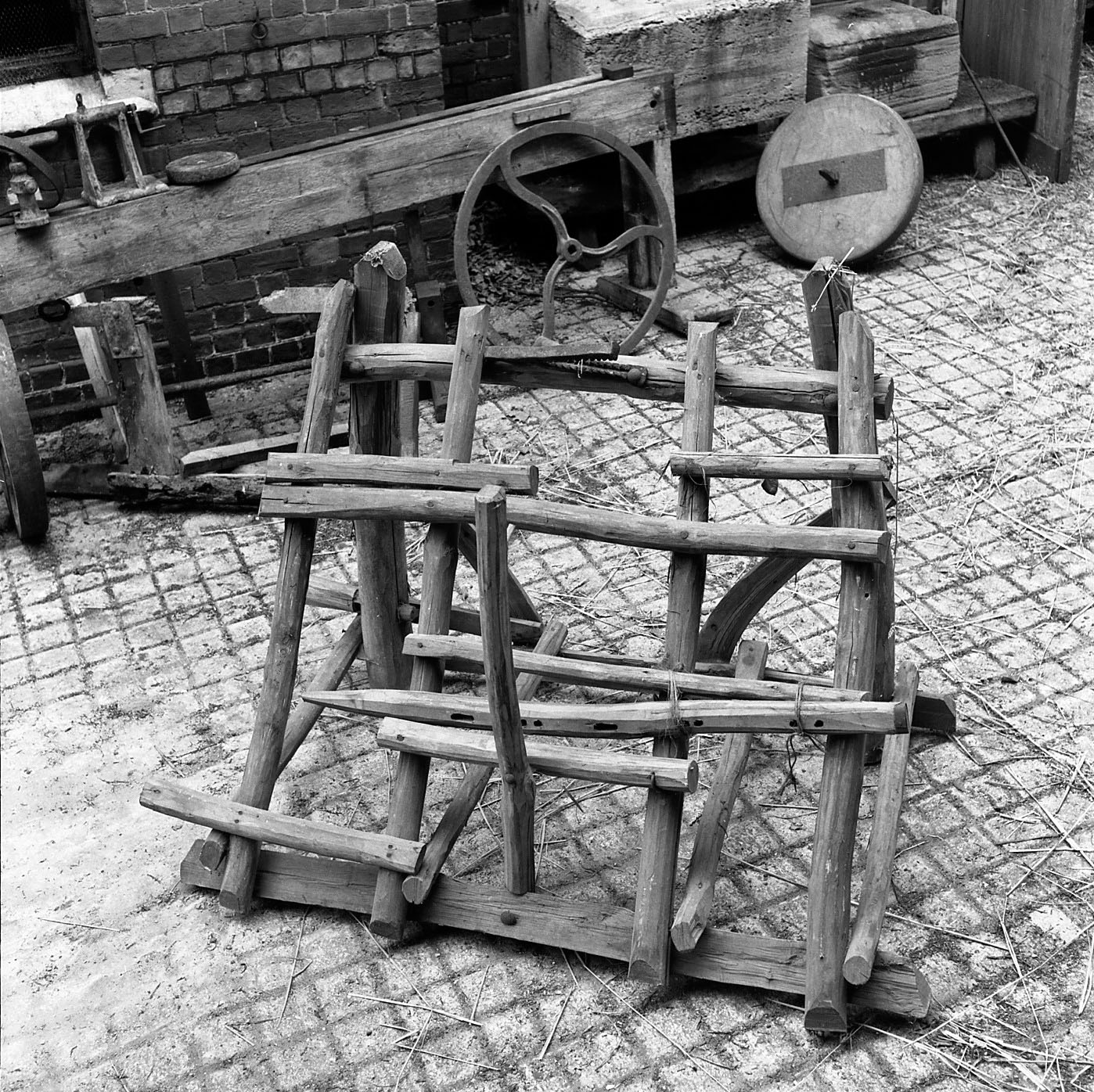
45. Making Hurdles
Hurdle maker’s brake, circa 1951
This frame, used to make hazel wood hurdles, was probably displayed at the Festival of Britain, at a time when other types of livestock pen were taking over. Craft was located in the Festival’s ‘Country’ pavilion, alongside farming and these worlds were shown as traditional and interdependent. Handmade hurdles are now common as garden fencing or trellis and almost never used on farmyards.
If you would like to respond to this item please get in touch and tell us more.
MERL 52/36
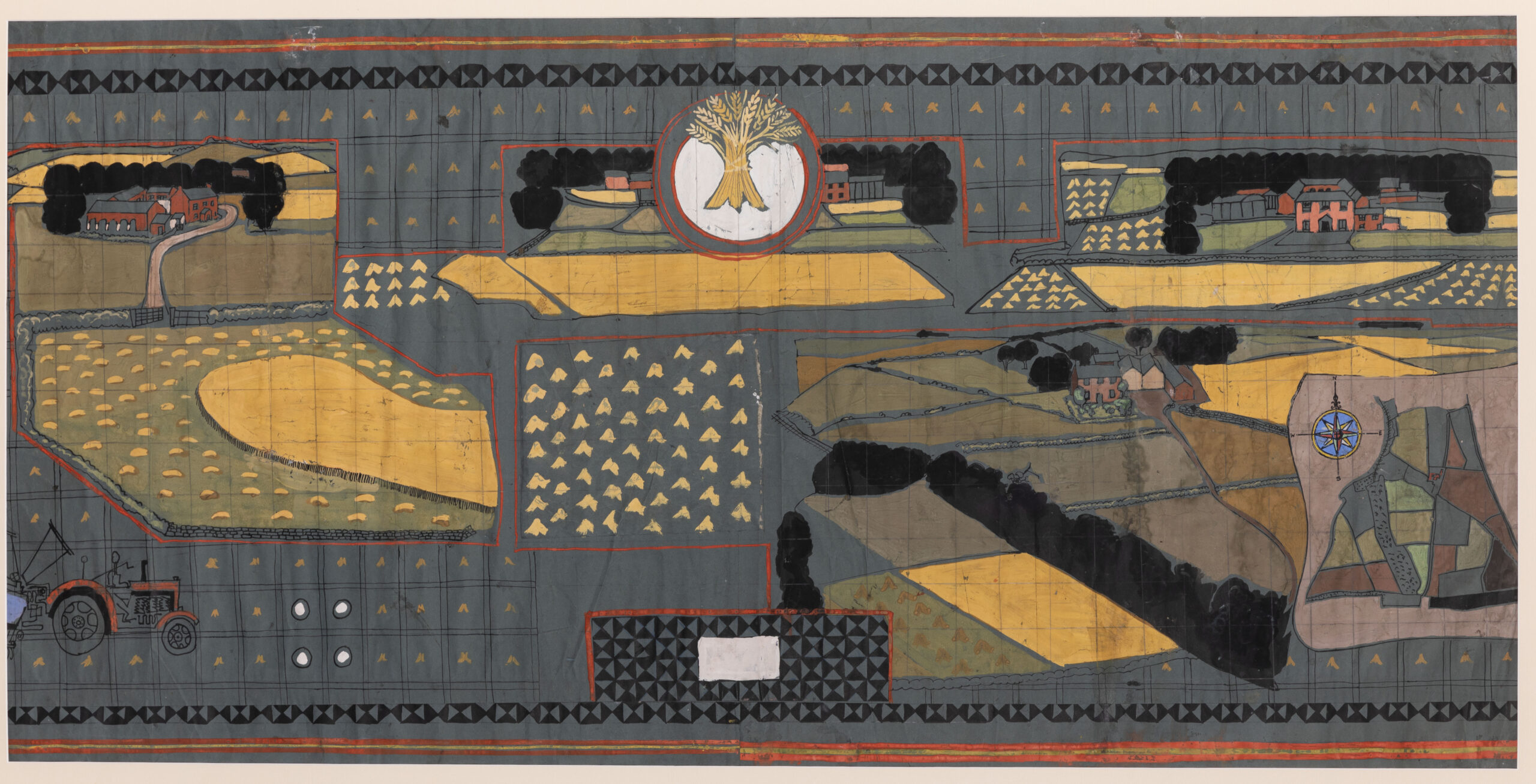
46. Countryside Cartoons
Michael O’Connell, Diversity of British Farming designs, circa 1950
These cartoons were preparatory sketches for a Festival of Britain artwork. Michael O’Connell was keen to represent the four nations of the UK accurately. In these designs and the finished work, Scottish and Welsh farming became ‘Upland Stock Farming’. This distorted geography leads us to consider how peripheral communities were represented creatively at the Festival; not just the Celtic fringe, but those of the wider Empire. For example, when the Trinidadian All Steel Pan Orchestra played at Southbank this was the first time steel pan music had been heard in the UK.
MERL 2009/64/1-7
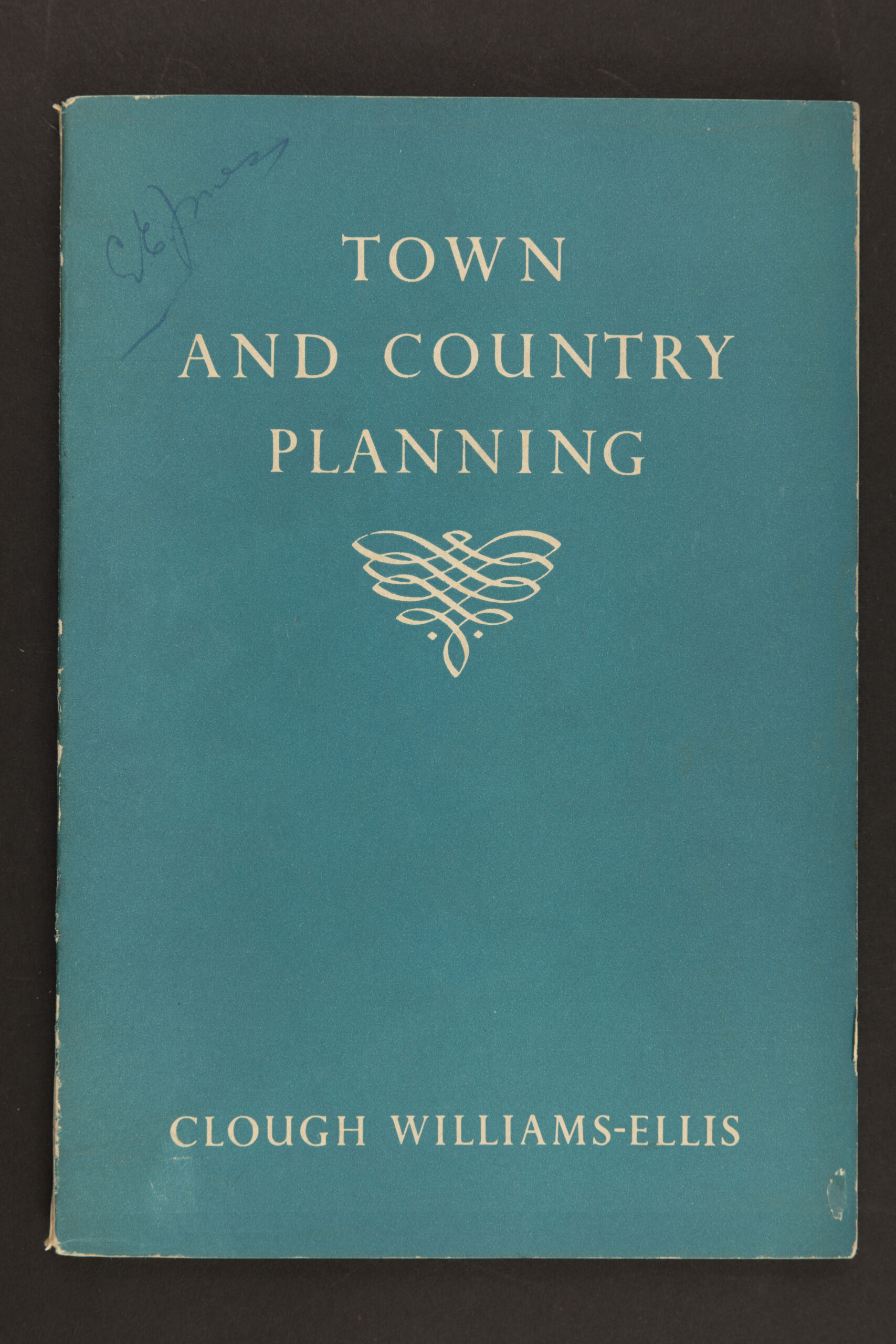
47. Town and Country
Clough Williams-Ellis, Town and Country Planning (British Council, 1951)
This pamphlet was part of a series published by the British Council. It came at a time of transition. In January 1951, a new Ministry of Local Government and Planning merged planning policy with functions concerning public health and governance. The booklet’s author, Clough Williams-Ellis, was a well-known voice in debates concerning rural conservation. His 1927 book, England and the Octopus, offered a powerful argument against unchecked urban expansion.
If you would like to respond to this item please get in touch and tell us more.
MERL Library Pamphlet Box 2860 01/18
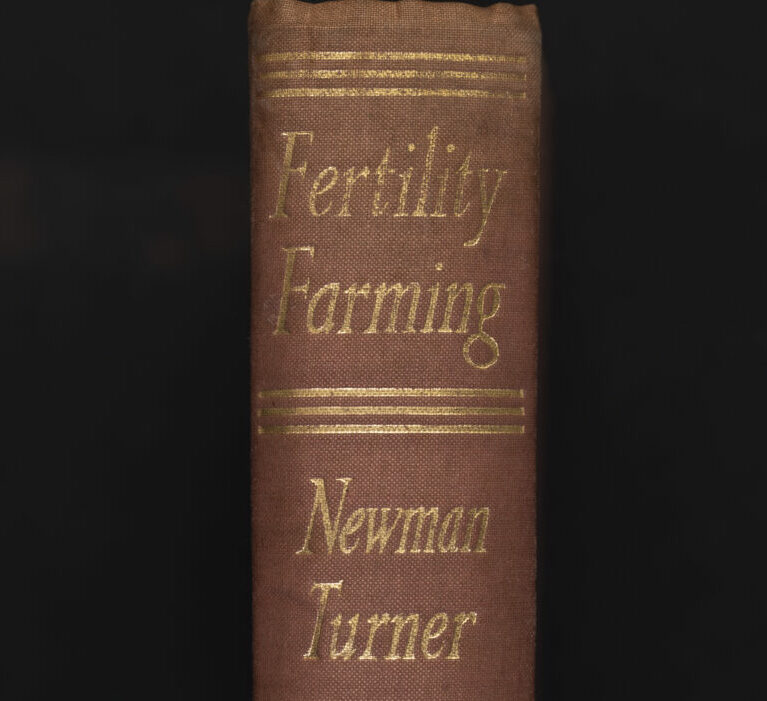
48. Fertile Soils
Frank Newman Turner, Fertility Farming (London: Faber and Faber, 1951)
This book owes its origins to a major figure in British organics, Sir Albert Howard, who urged farmer and journalist Frank Newman Turner to write about turning his Somerset farm organic. The result was the story of restoring a ‘dead farm’, avoiding the ‘snare’ of modern agriculture. He applied principles that Howard and others borrowed from traditional Indian agriculture. His enthusiasm for a ploughless resonates today, as does his desire for us to imitate rather than ‘battle against nature’.
Click here to read a more detailed examination of this book by Tim Jerrome.
MERL Lib. 3525 TUR
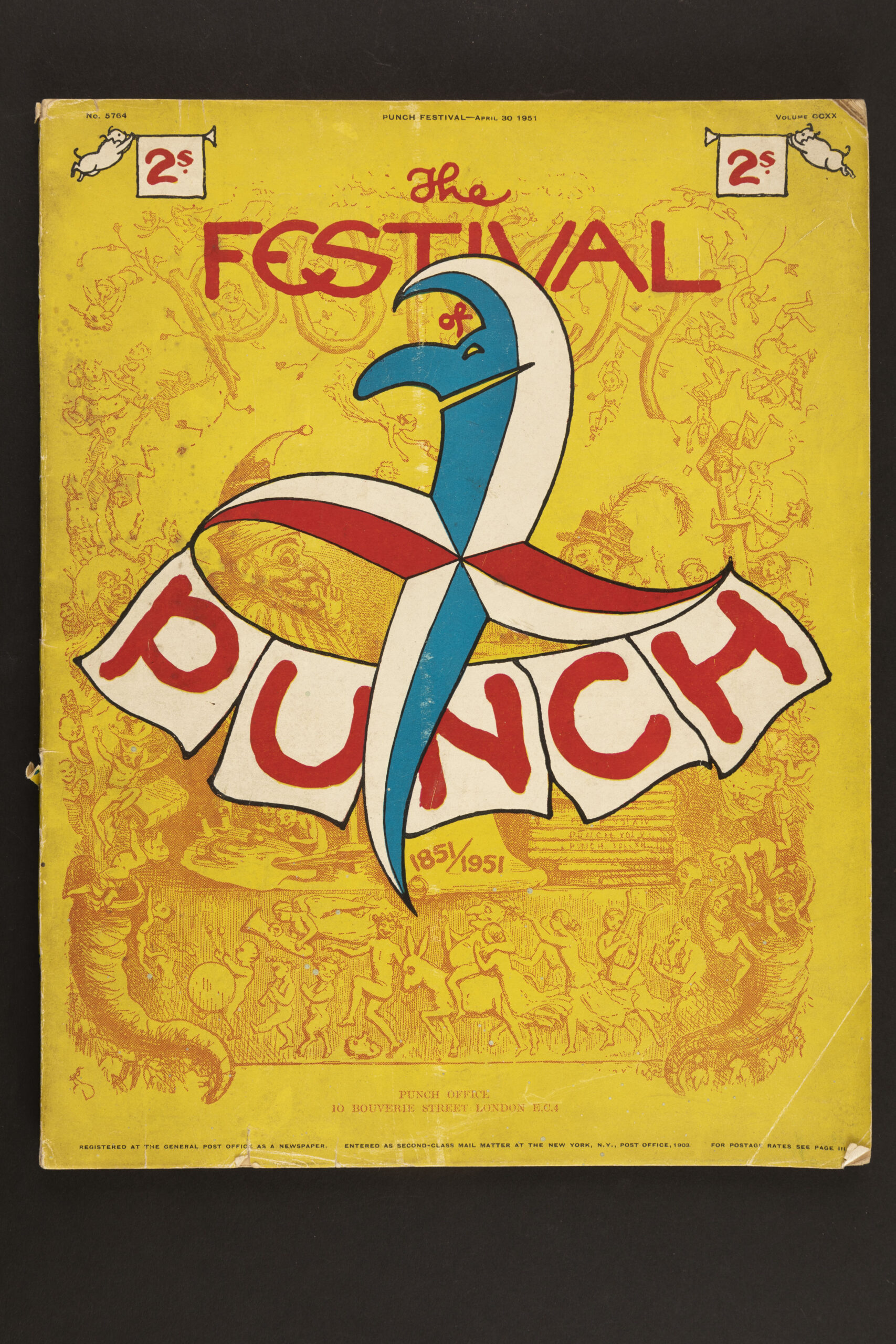
49. Festival of Punch
Punch, ‘The Festival of Punch: 1851-1951’, 30 April 1951
This special edition of the magazine drew comparisons between the Festival of Britain and the Great Exhibition of a century earlier. One cartoon contrasted the ‘Native Village – 1951’ with its 1851 equivalent. The nineteenth century was seen as rural but the twentieth defined by prefabs, construction, and queues. Another joke explored American misconceptions about Britain. This included hunting, railways, hills, ‘no trespass’ signs, old buildings, and farmland. Of course, many of these components also found a place within the Festival itself.
If you would like to respond to this item please get in touch and tell us more.
Special Colls. Great Exhibition Coll. Large 03/23
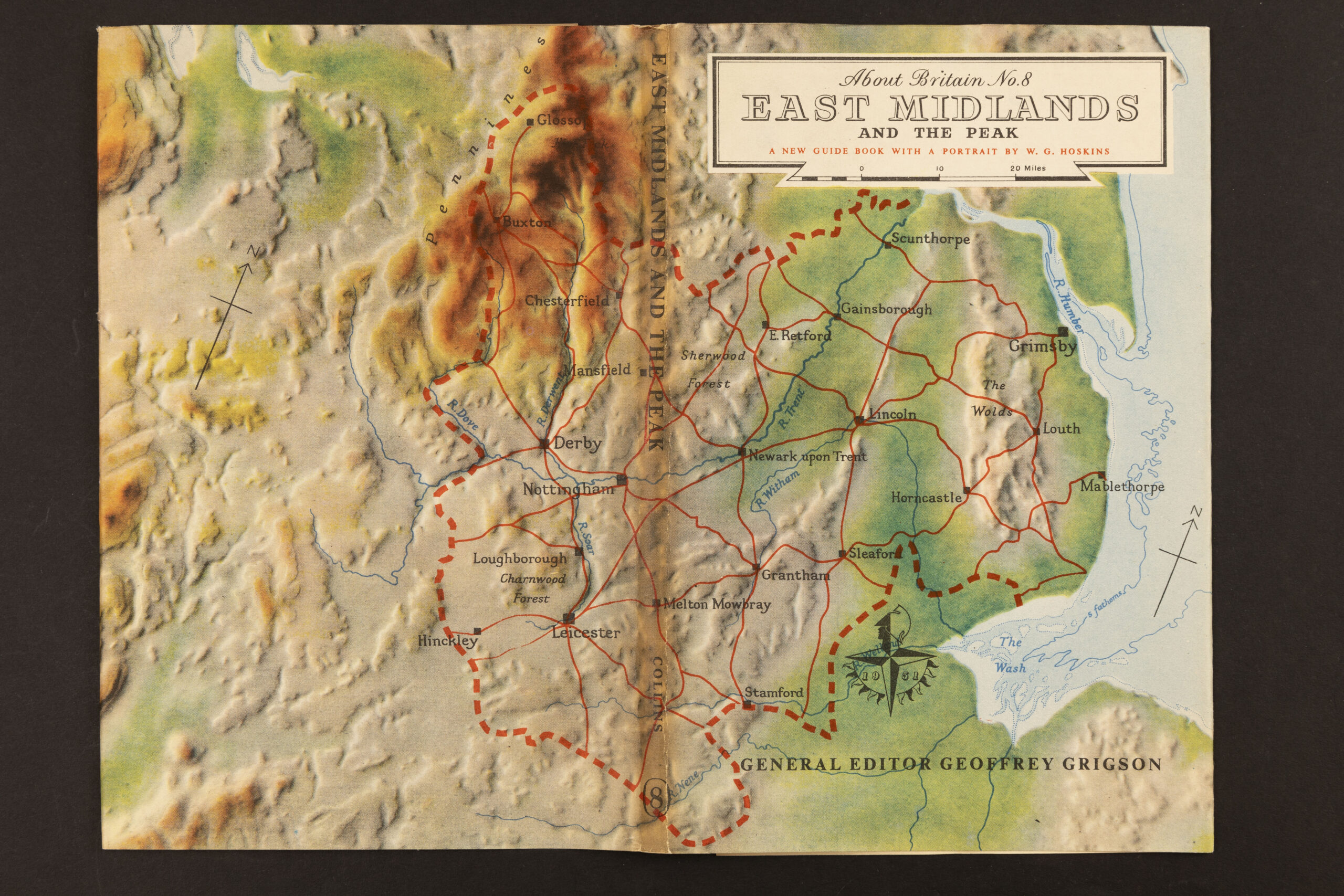
50. About Britain
Geoffrey Grigson (ed.), About Britain Guides, 1951
This set of thirteen travel guides was produced in parallel with the Festival of Britain. They were edited by poet, author, and naturalist Geoffrey Grigson. The Guides divided the nation into regions rather than counties. The landscape specialist W. G. Hoskins contributed two volumes, including East Midlands and the Peak. His influential book The Making of the English Landscape was published only four years later.
Many images, including this one, were taken specially for 51 Voices by Laura Bennetto of Bennetto Photography.
Great Exhibition Collection 11/12-24
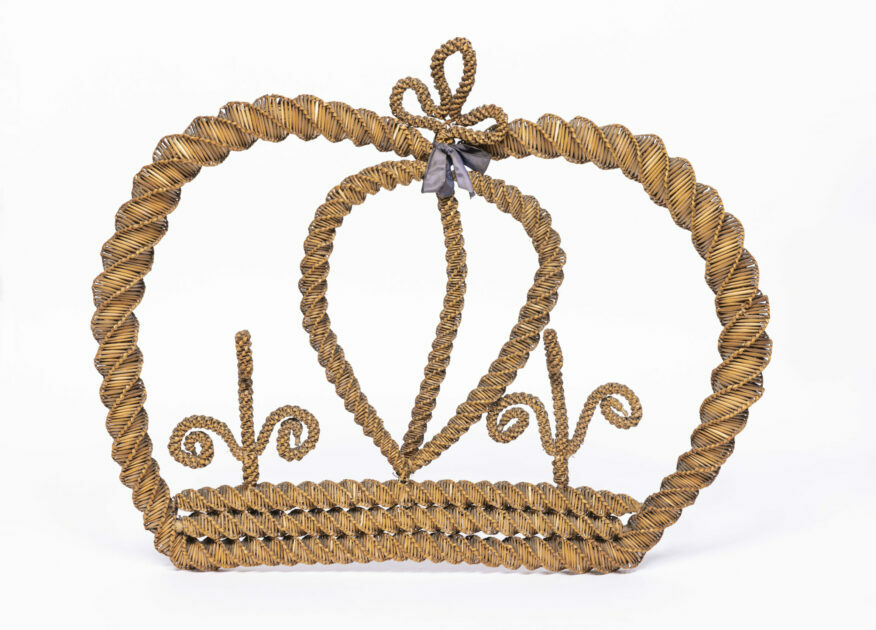
51. Strawcraft Symbols
Fred Mizen, ‘Corn Dolly’ sculptures, 1951
Fred Mizen made various straw sculptures for the Festival of Britain, including a large Lion and Unicorn. He also made smaller pieces for the ‘Country’ pavilion to explore countryside themes and ideas of sovereignty and tradition. These included a crook, scythe, barley fork, hay rake, bird table, crown, heart, and anchor. In 1954, these objects appeared in the backdrop of a BBC TV broadcast from The MERL. By this period decorative strawcraft was a folk revival of a craft largely sidelined by changing attitudes. It was apt that it featured at the heart of a Festival of mid-century modernity.
Click here to read a poem by Obby Robinson created in response to Fred Mizen’s strawcraft.
Curator of MERL Collections, Dr Ollie Douglas, explores corn dolly revivals and Mizen’s Festival of Britain straw craft, as published in issue 101 of Selvedge magazine and shared with their kind permission.
MERL 52/73-80